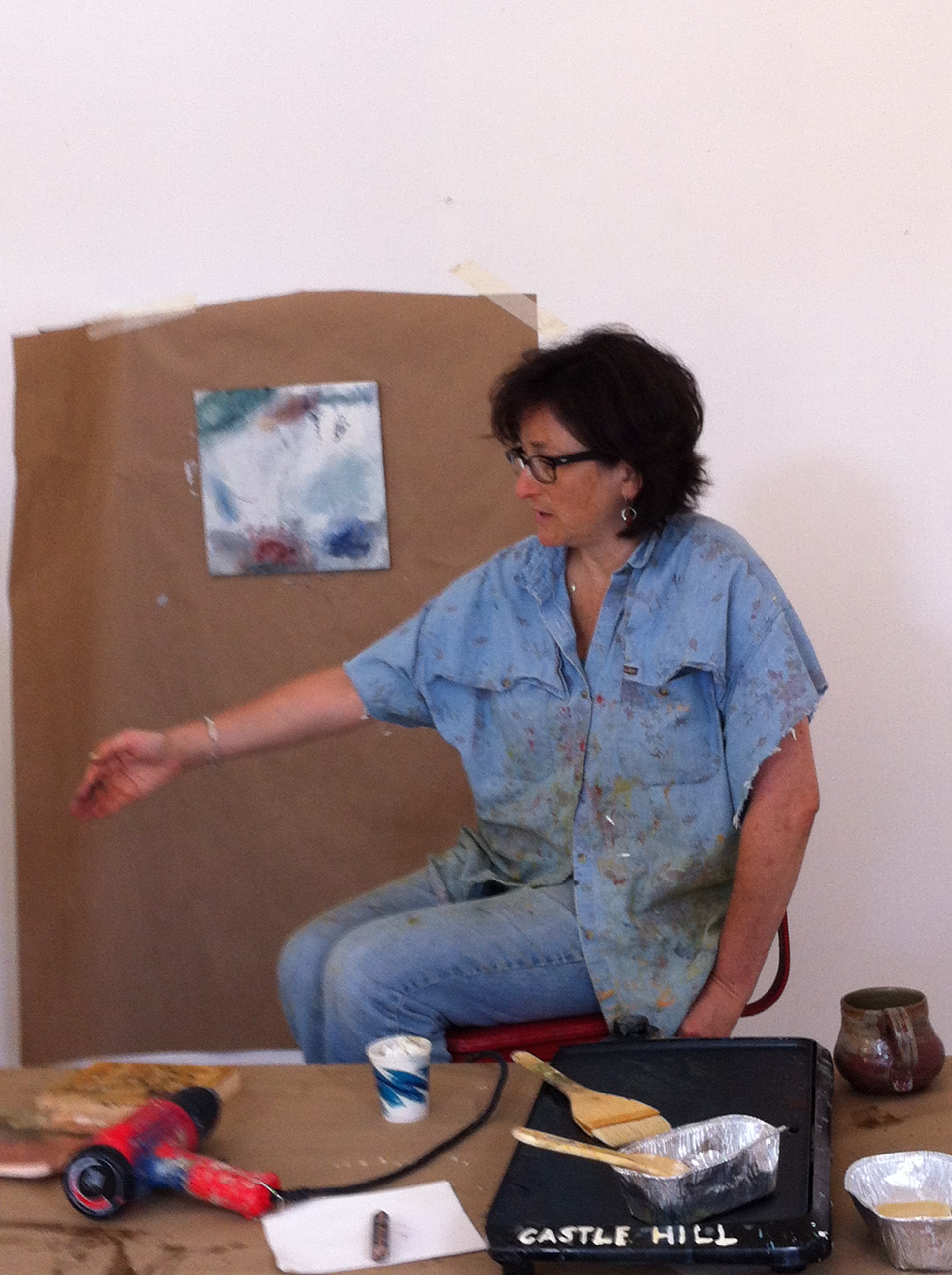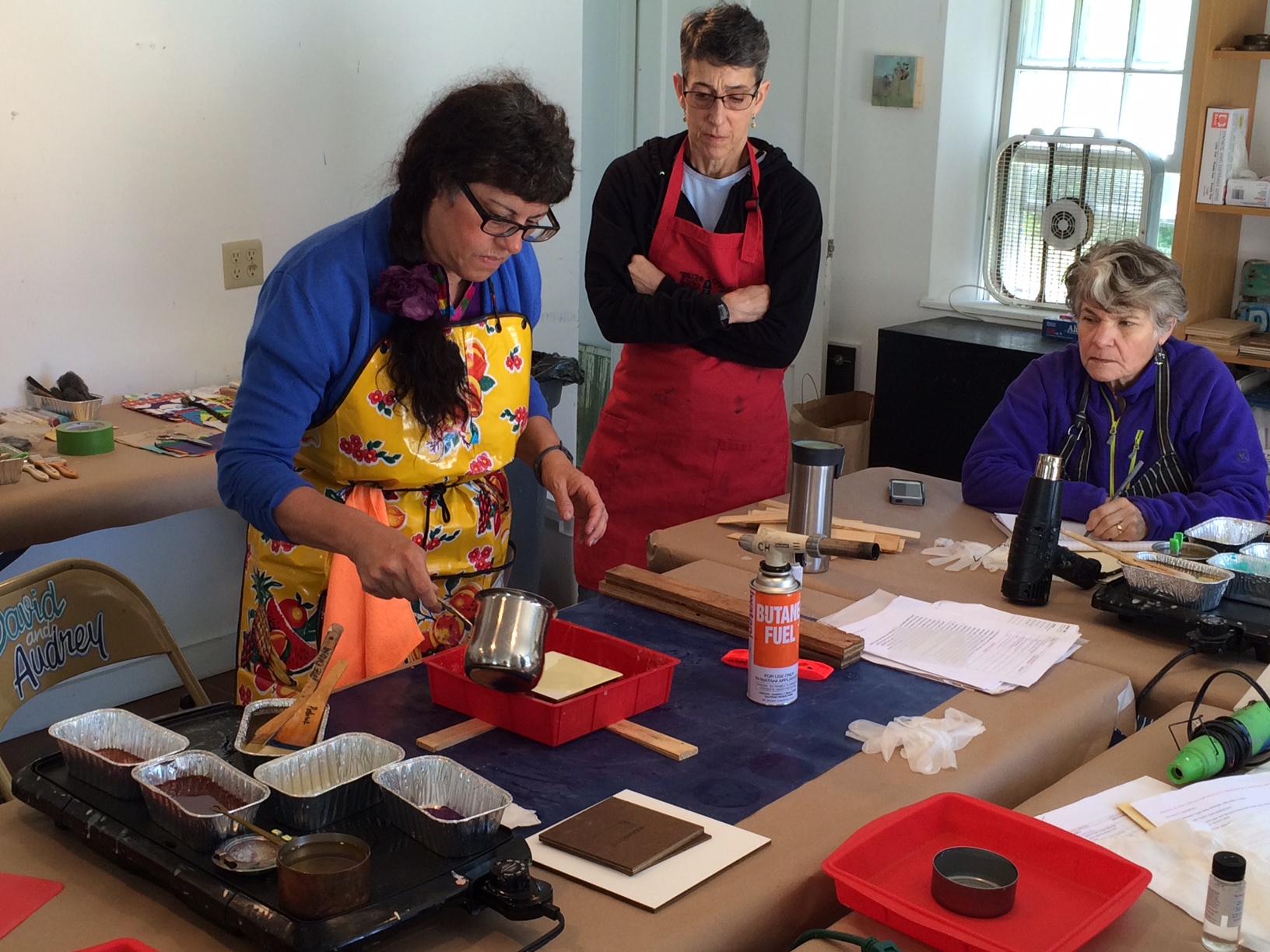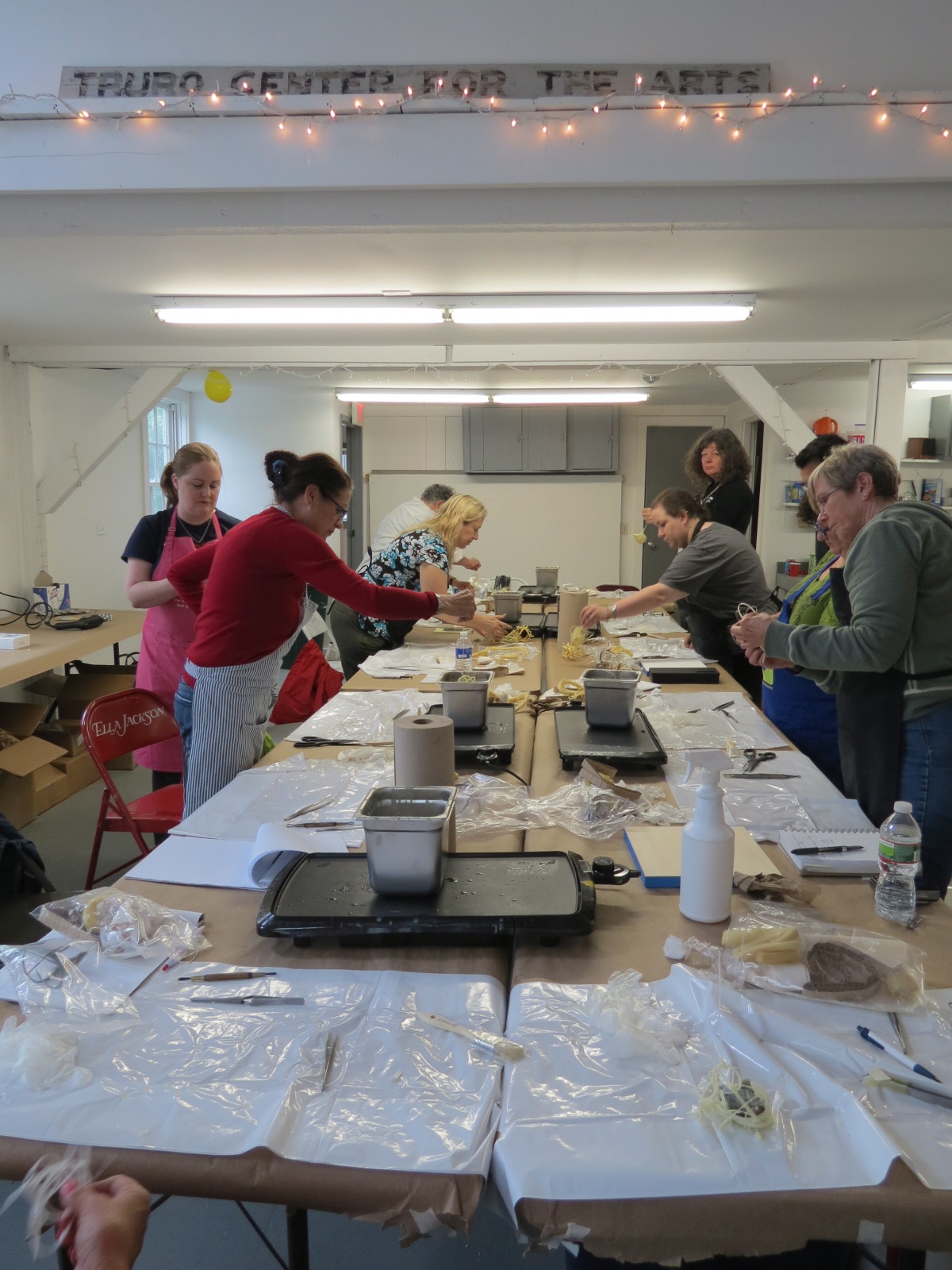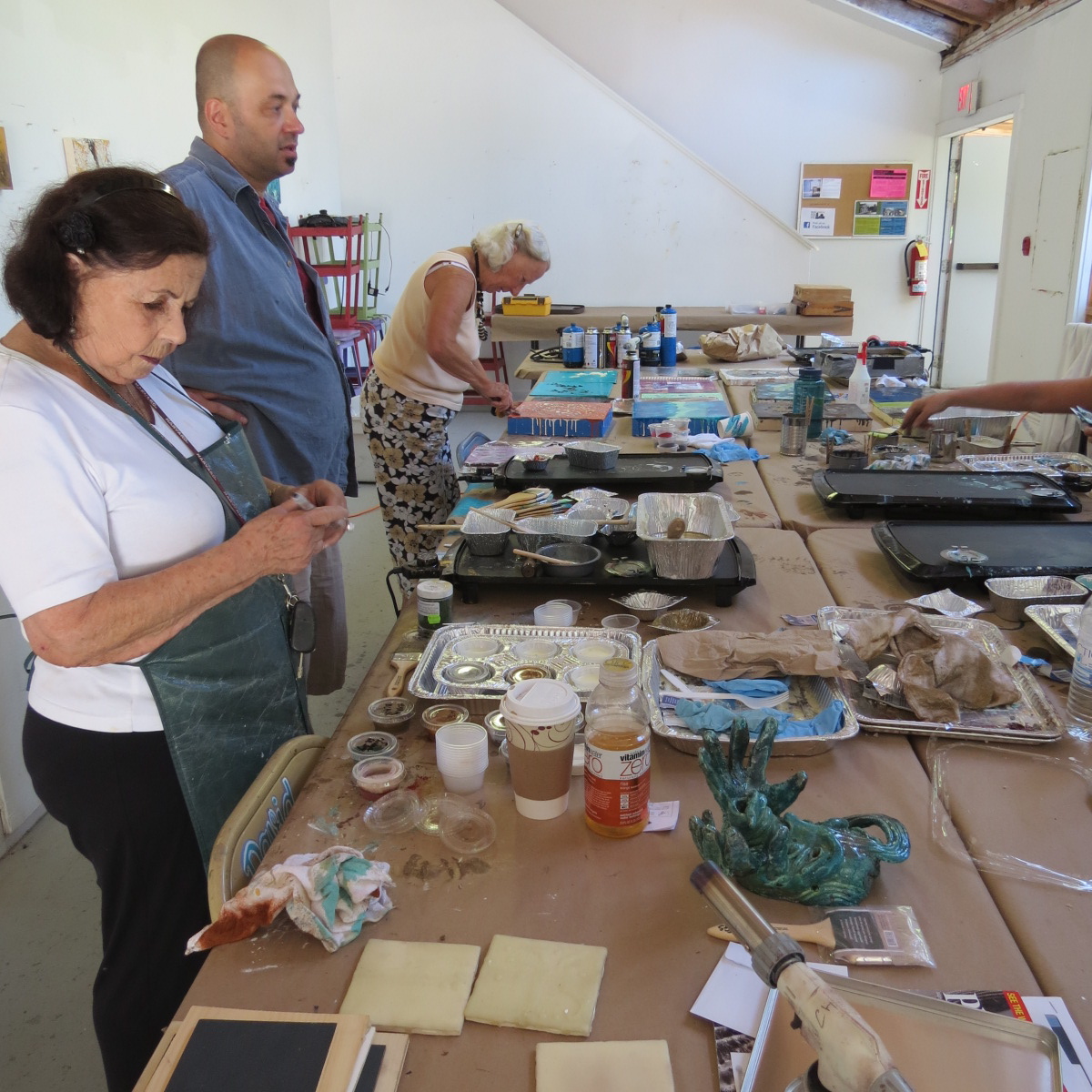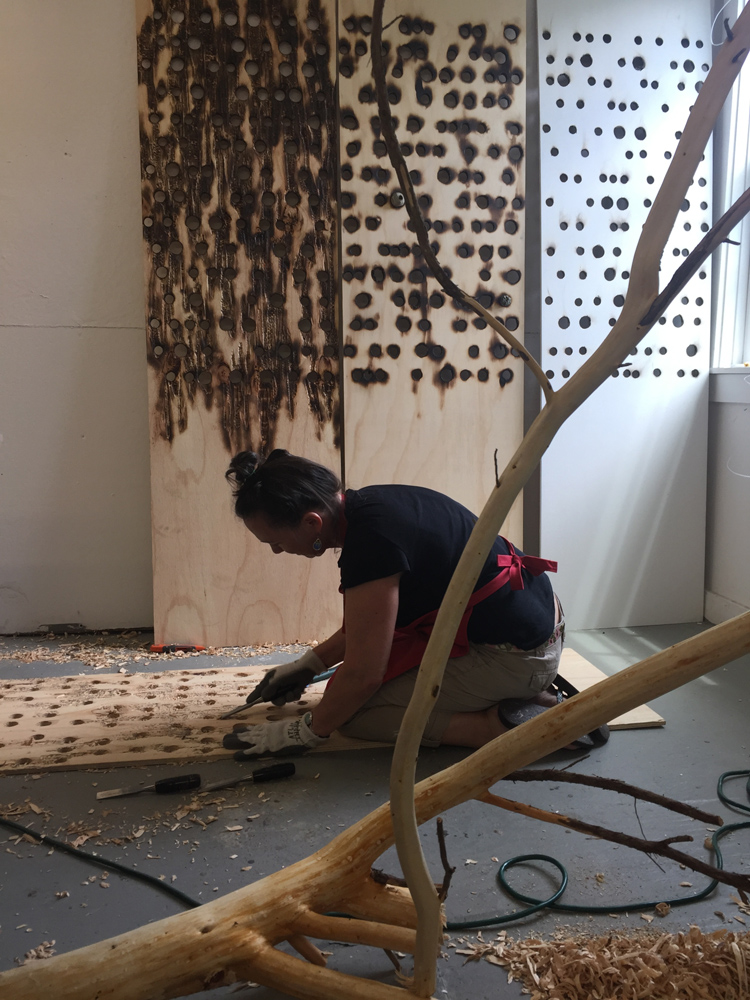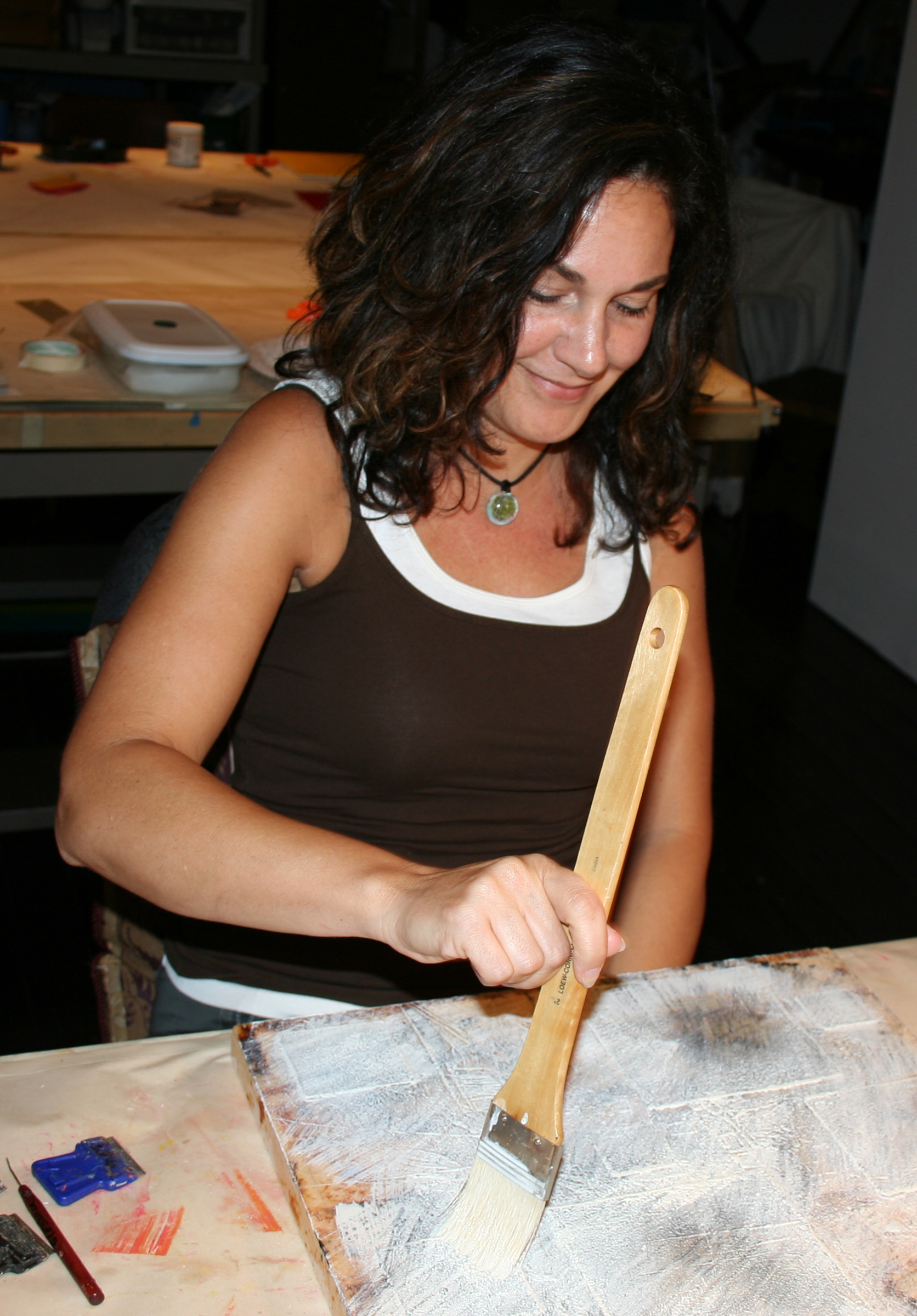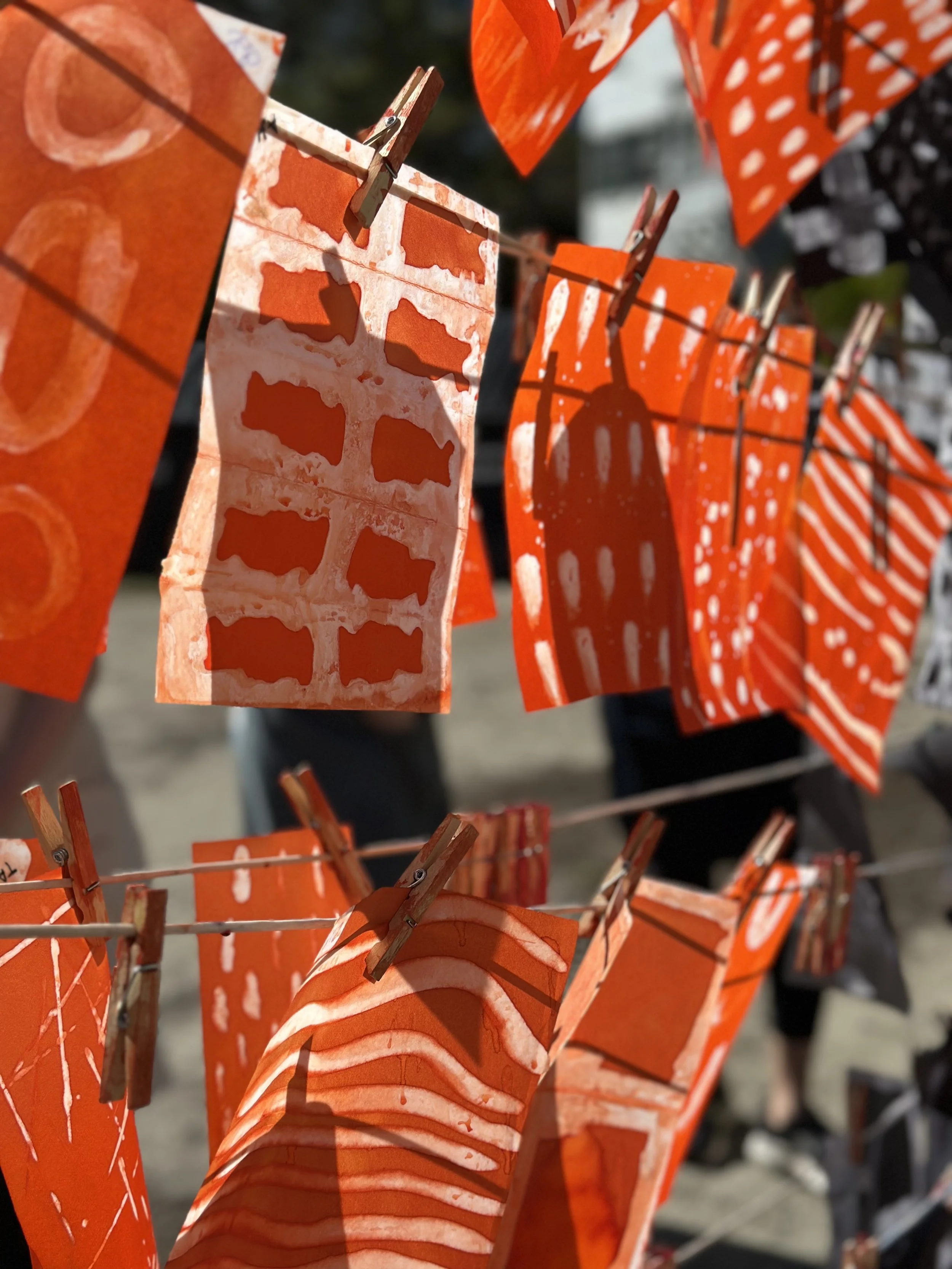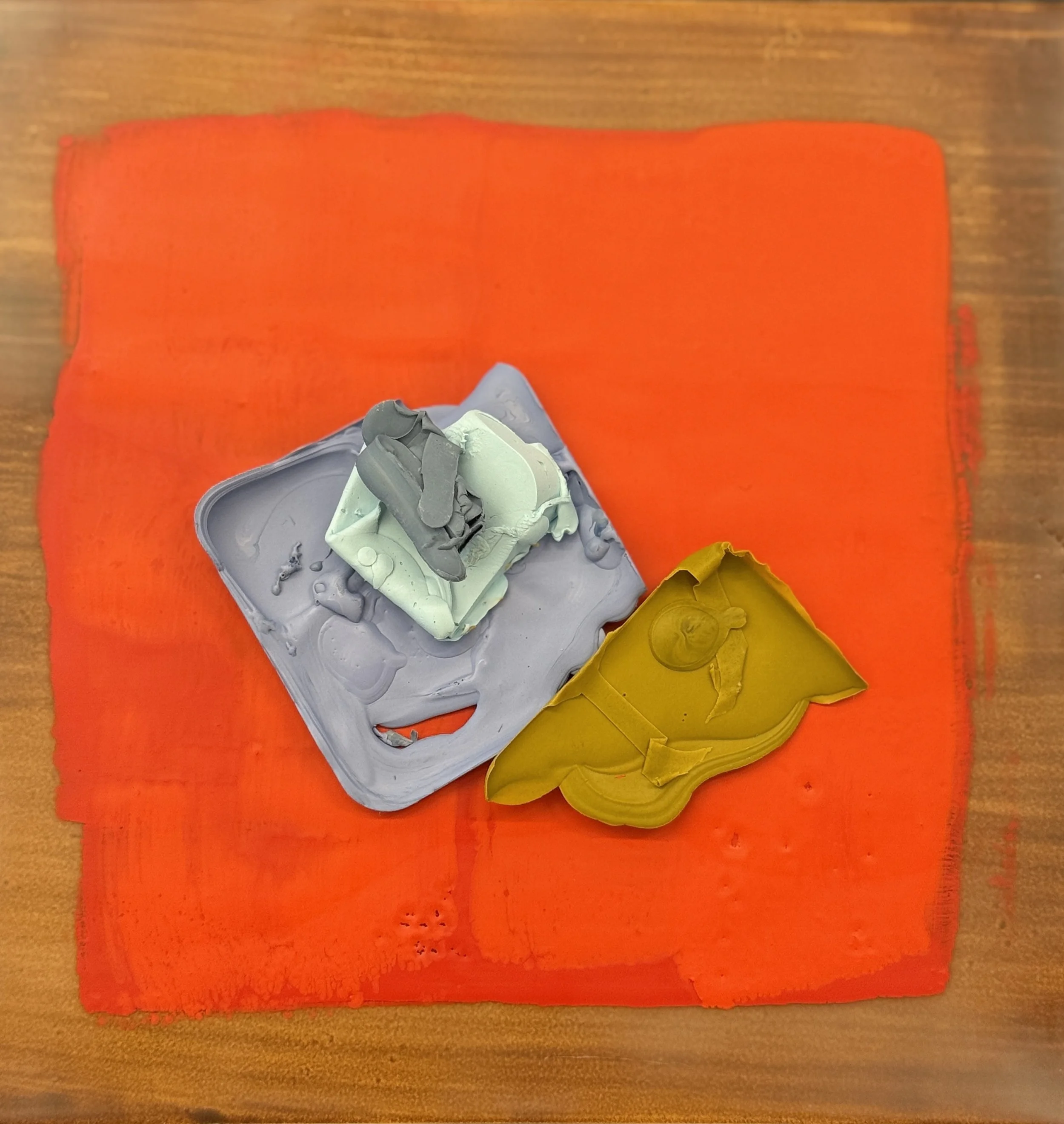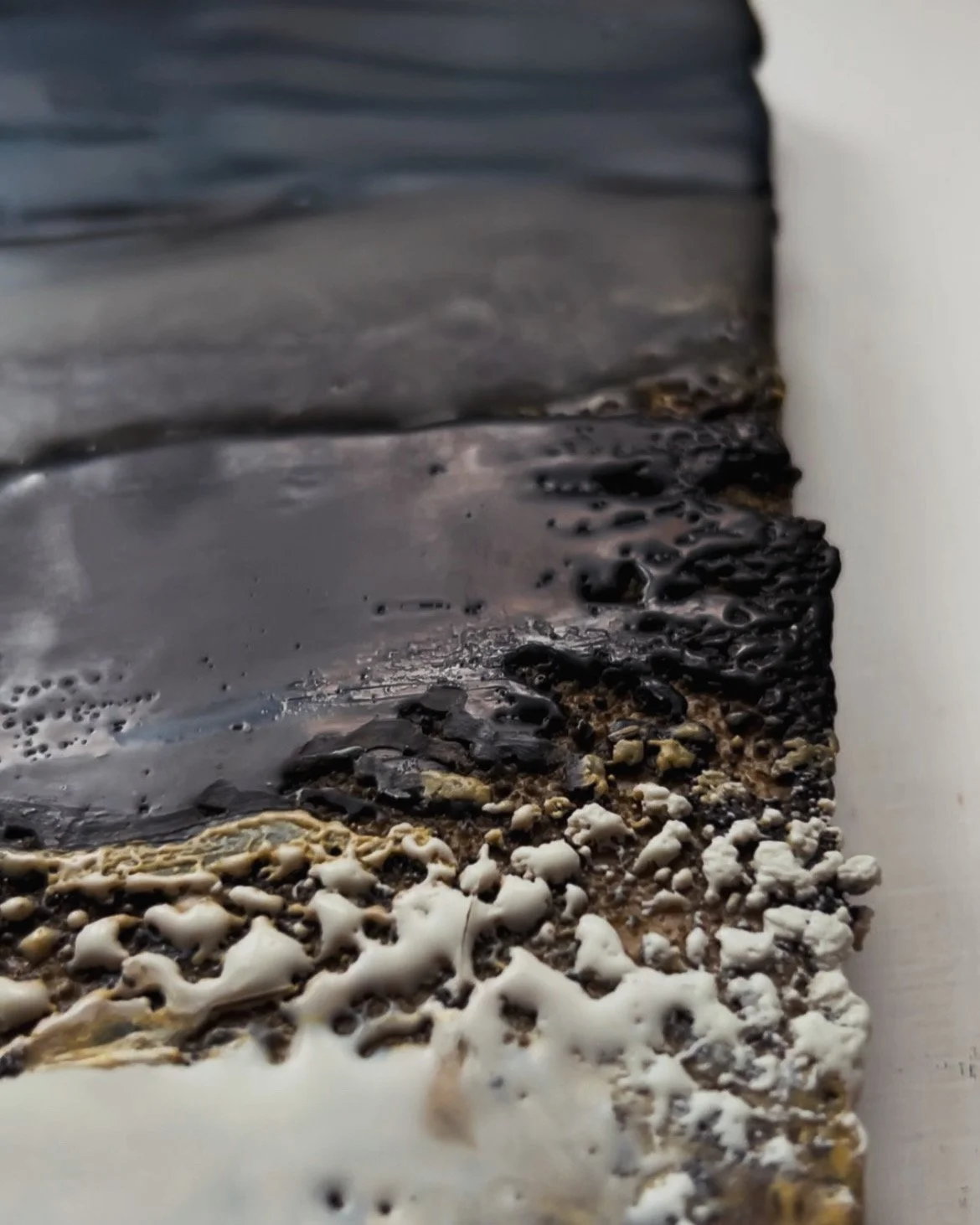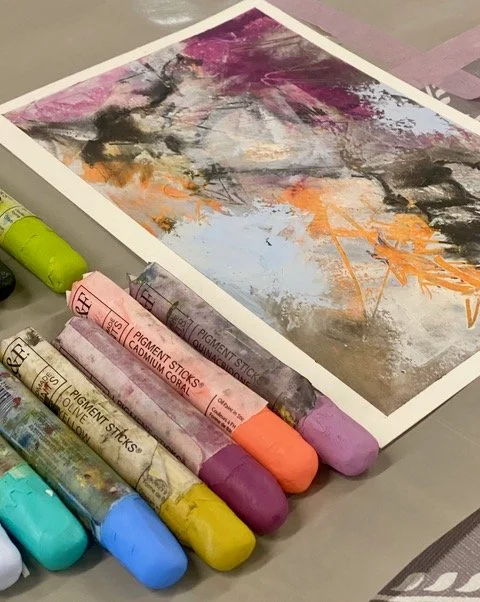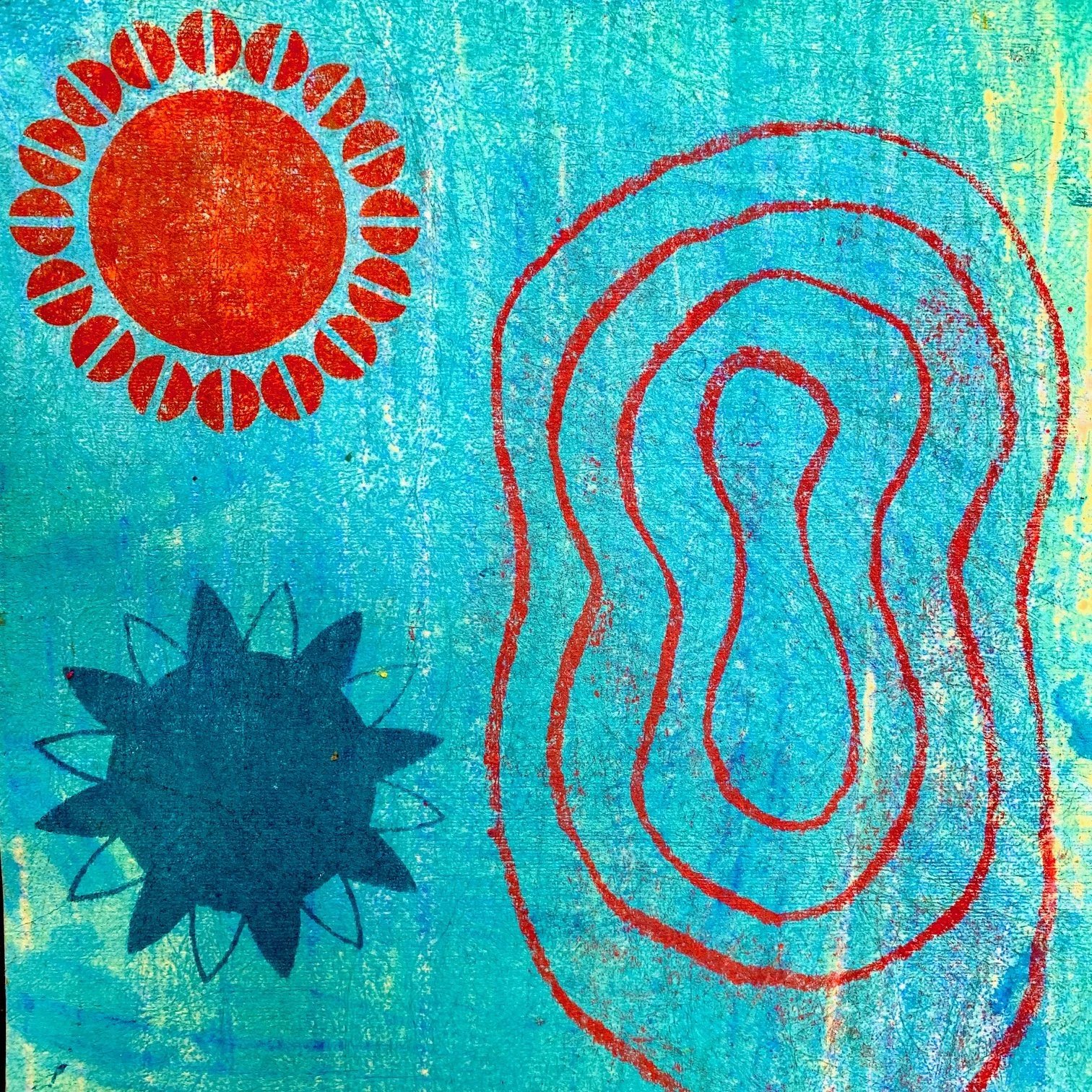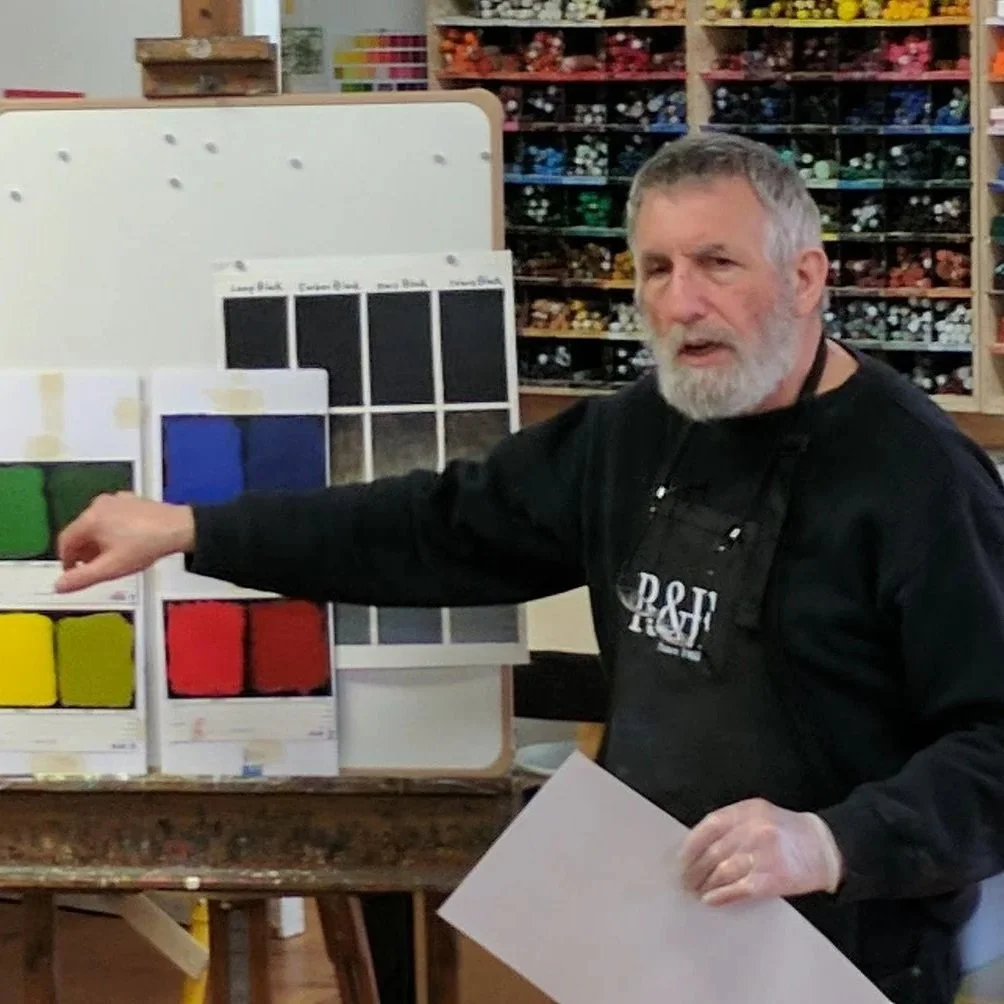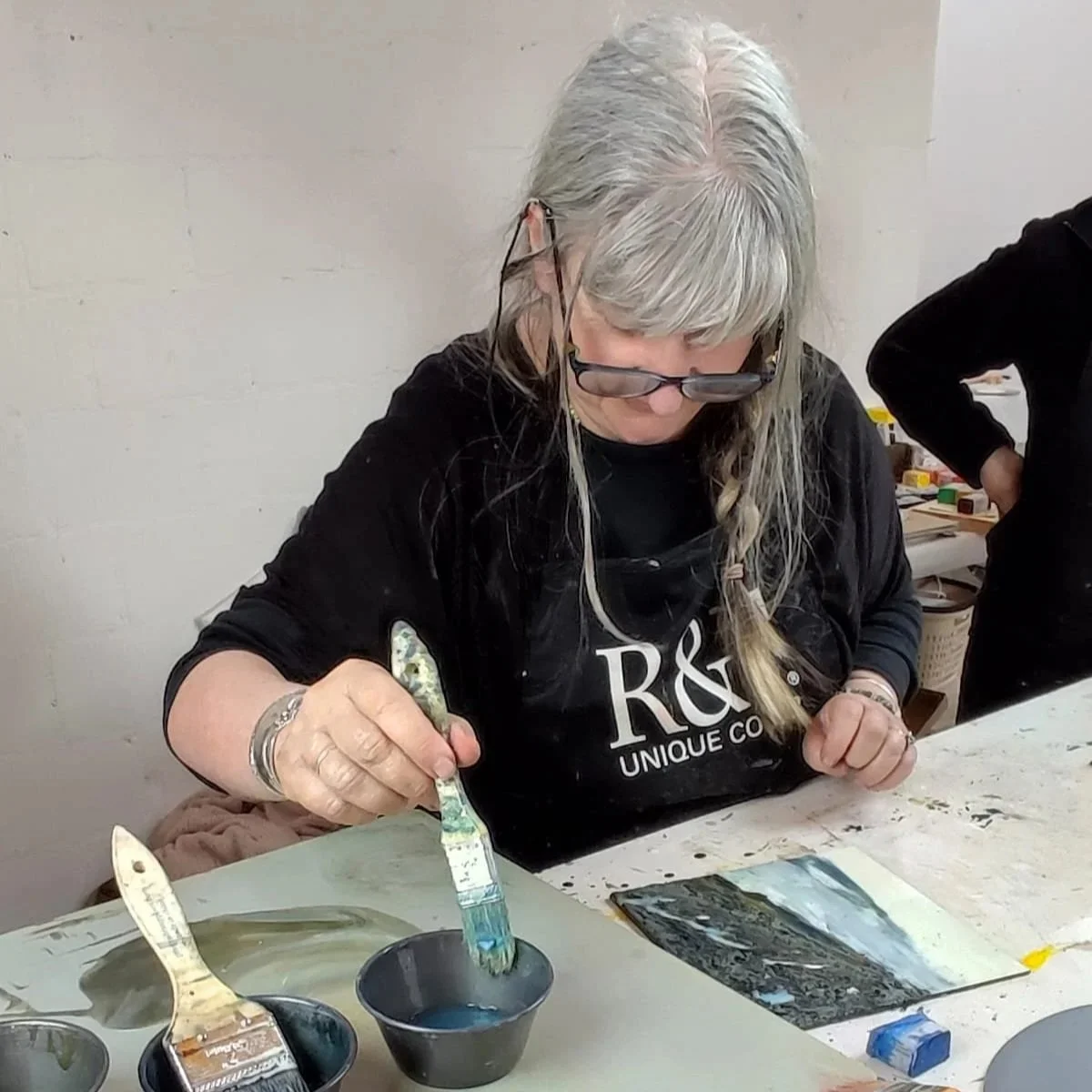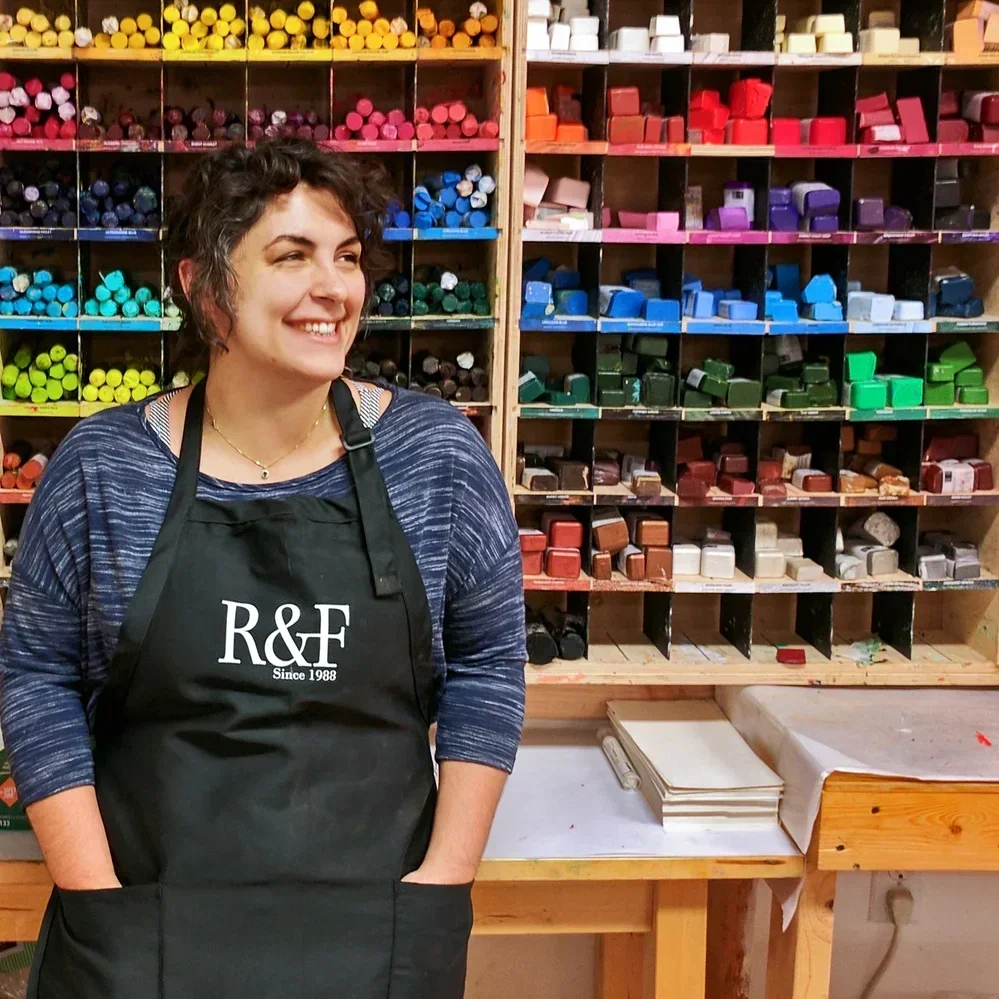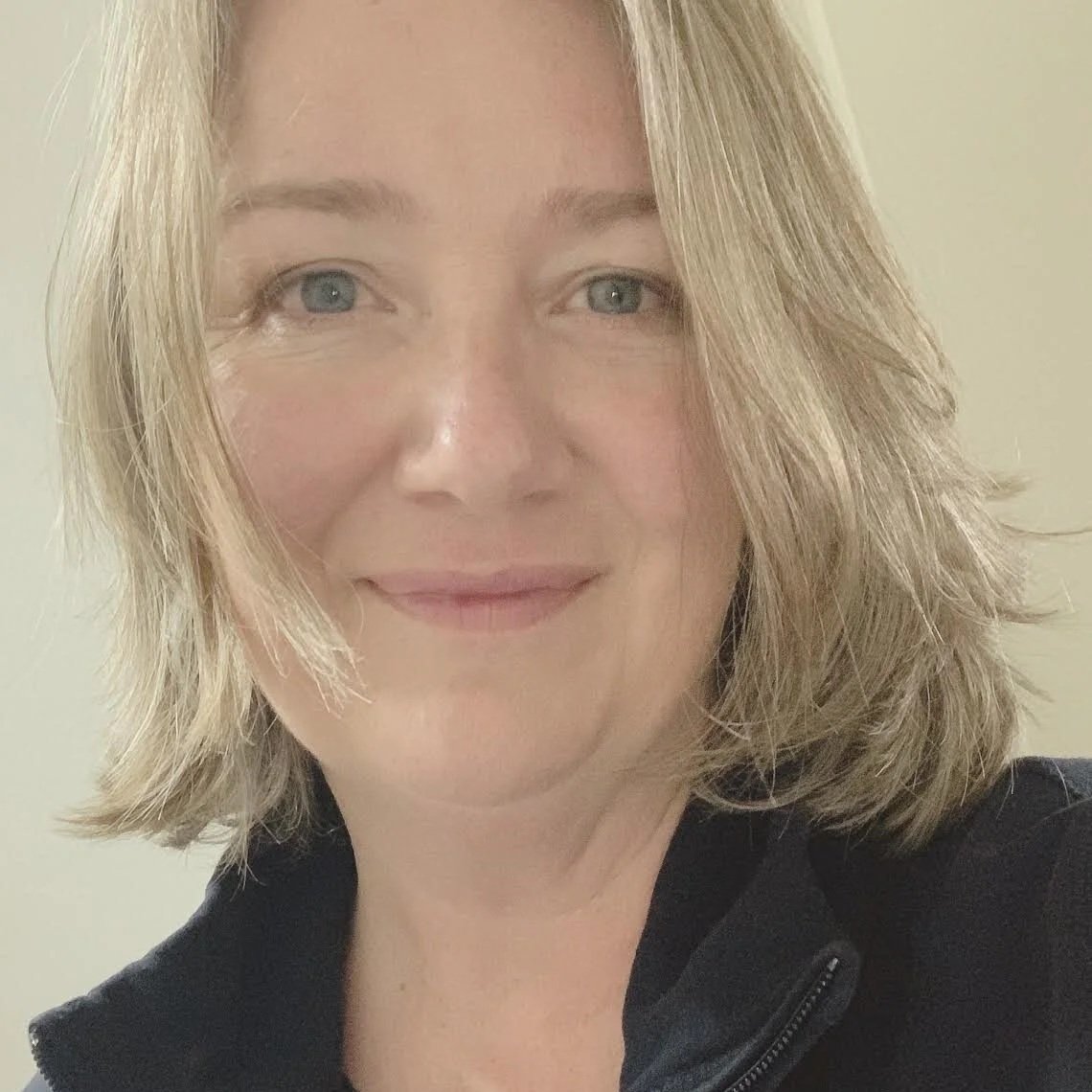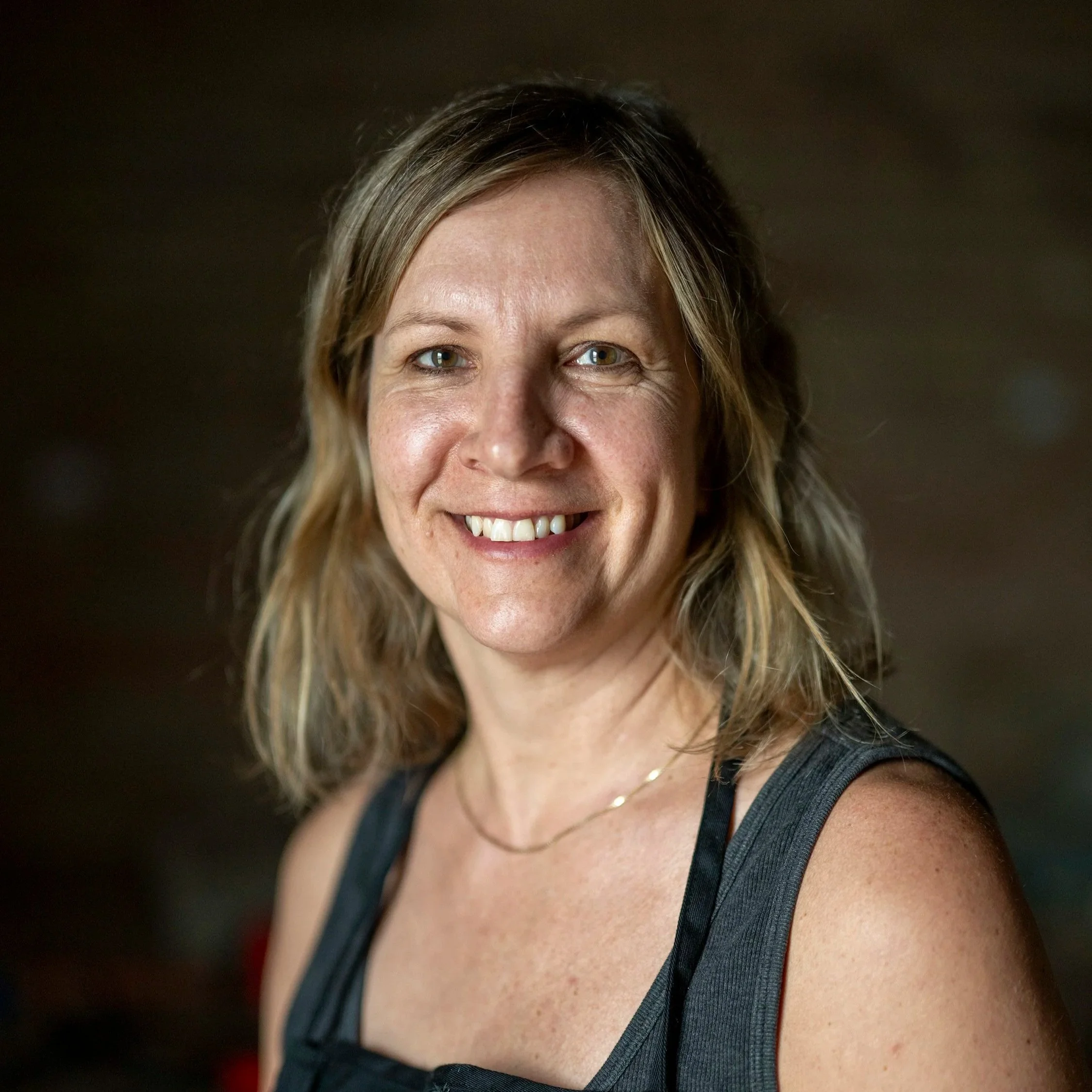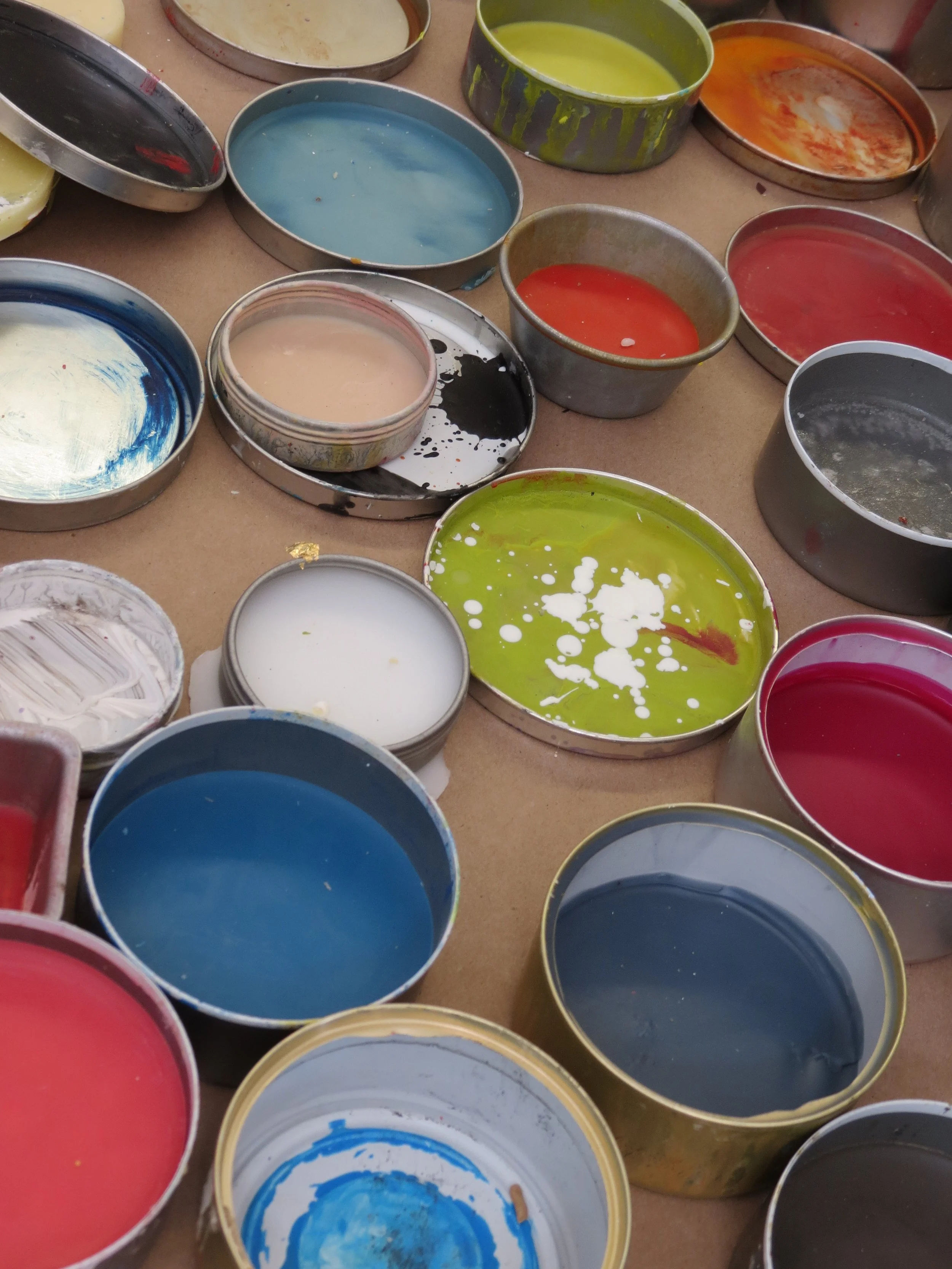
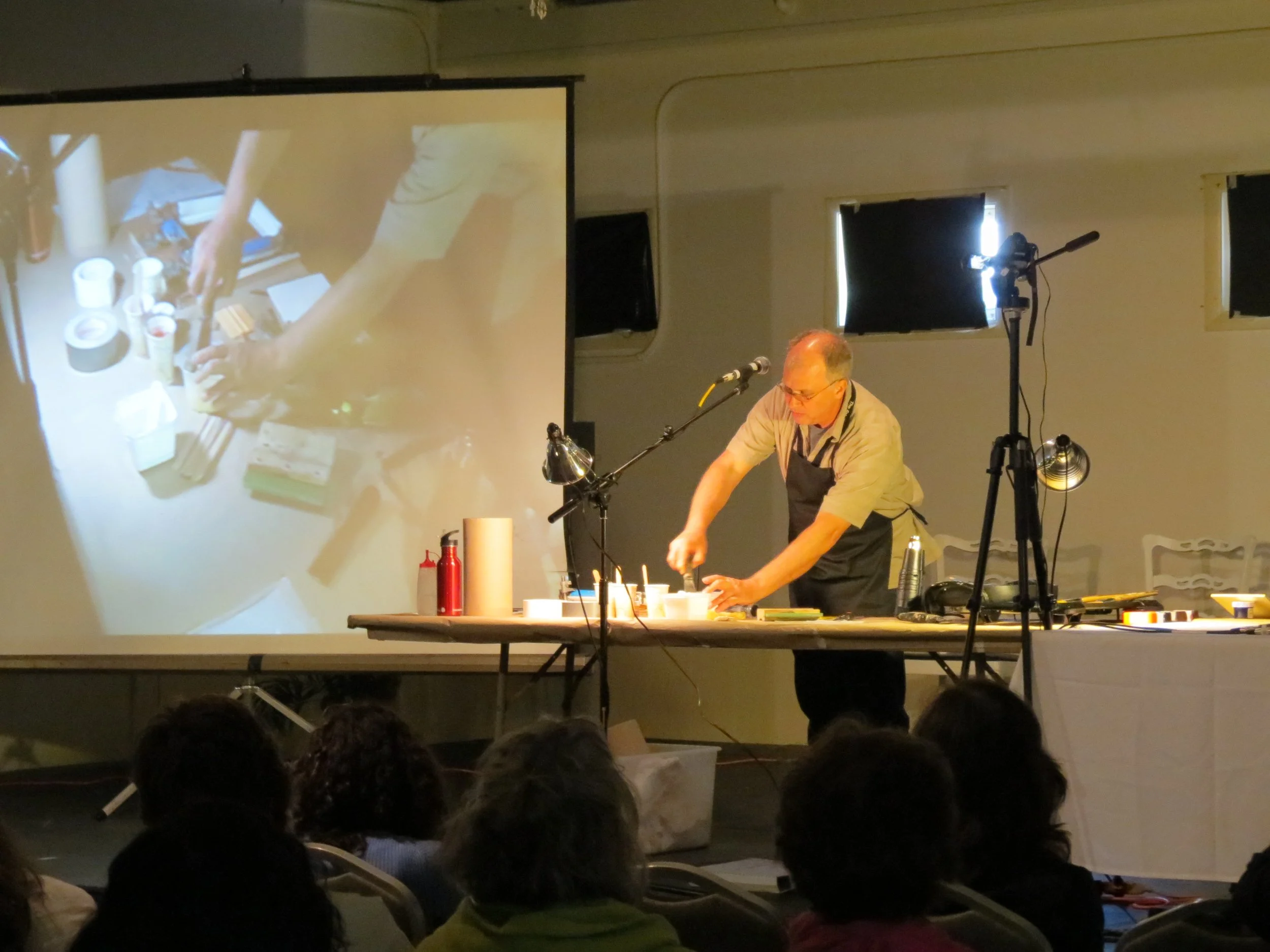


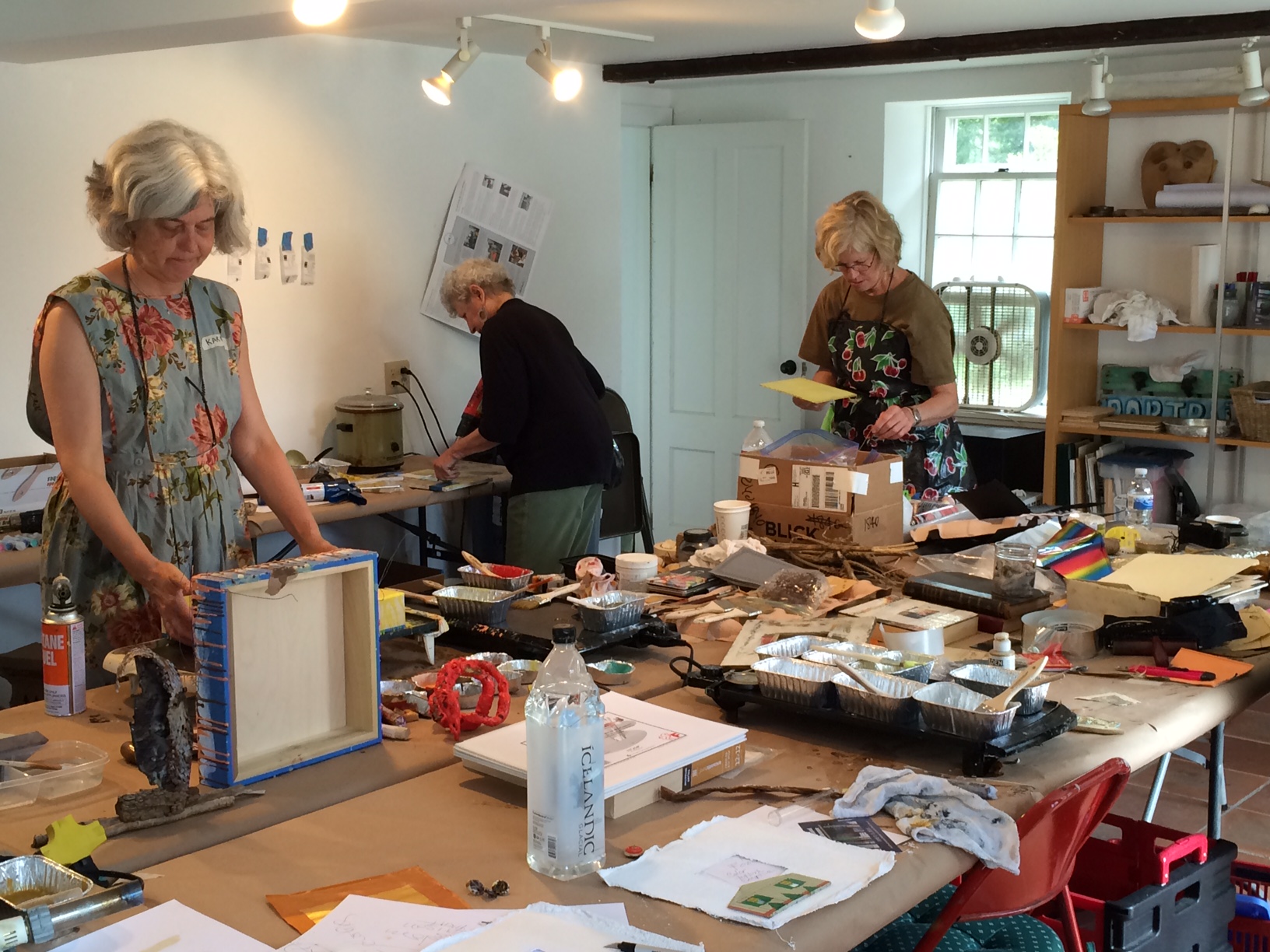
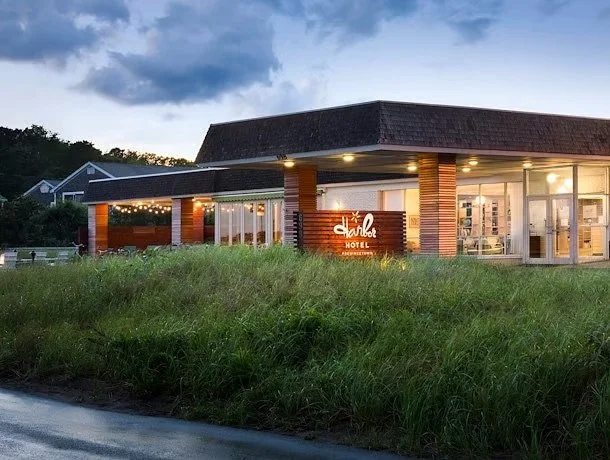
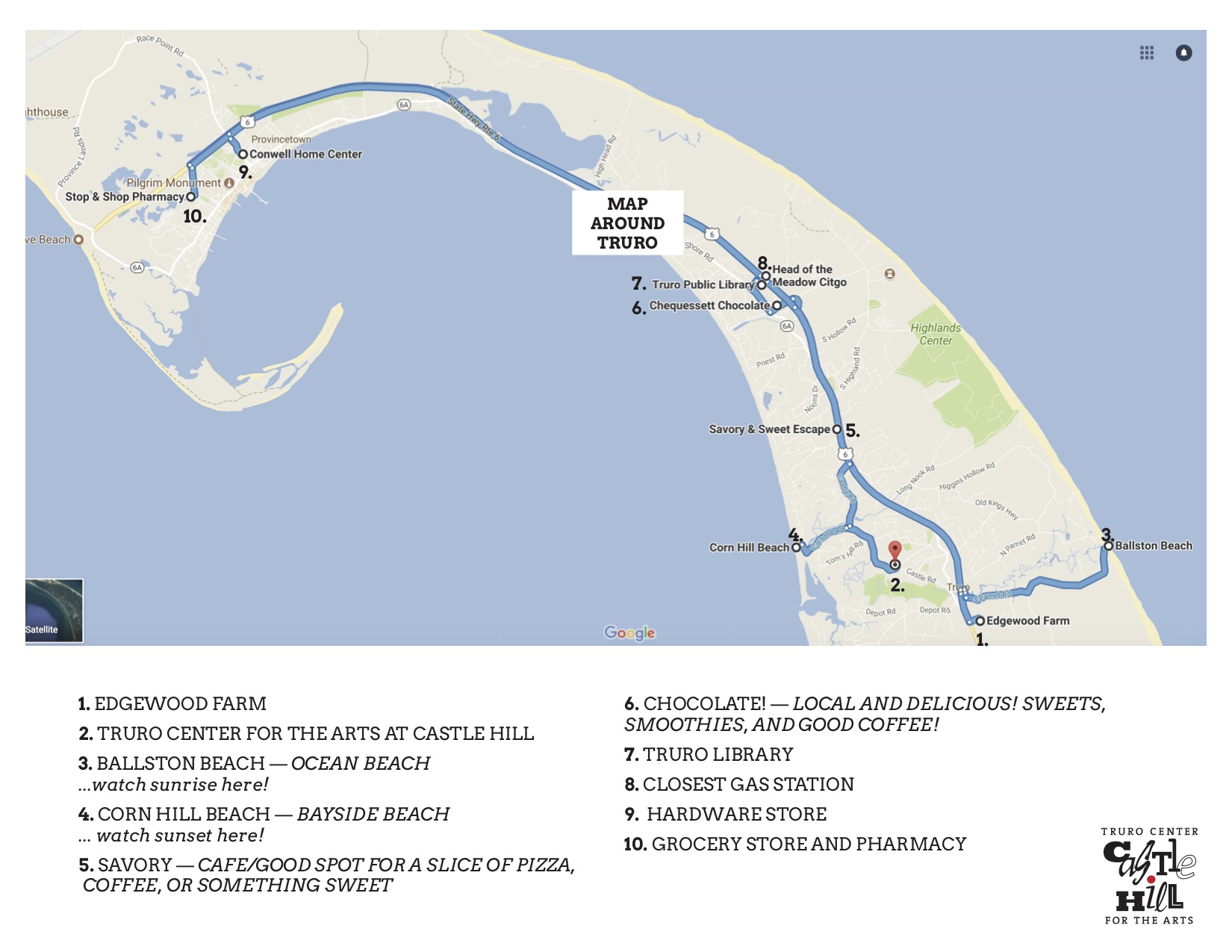
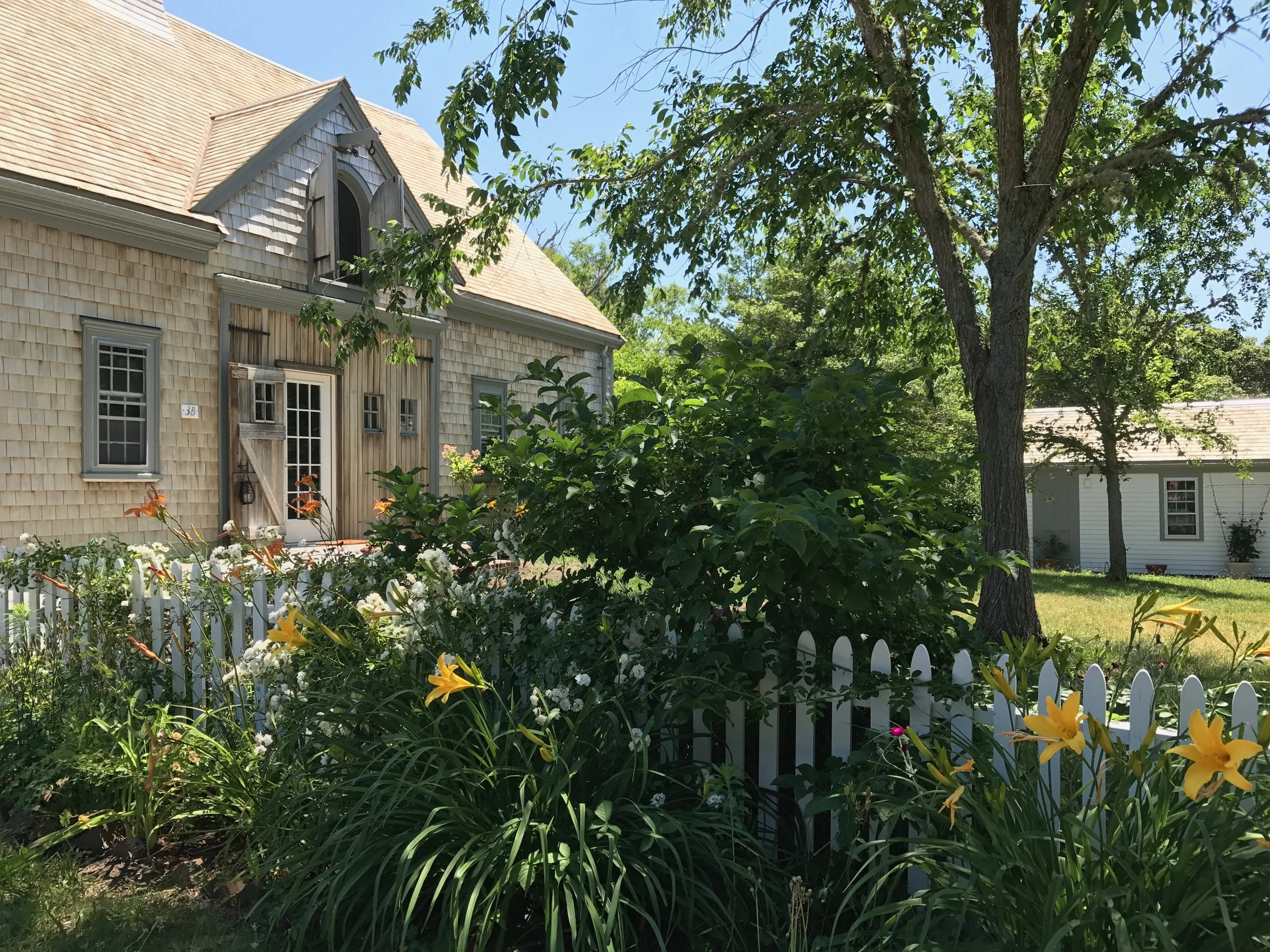


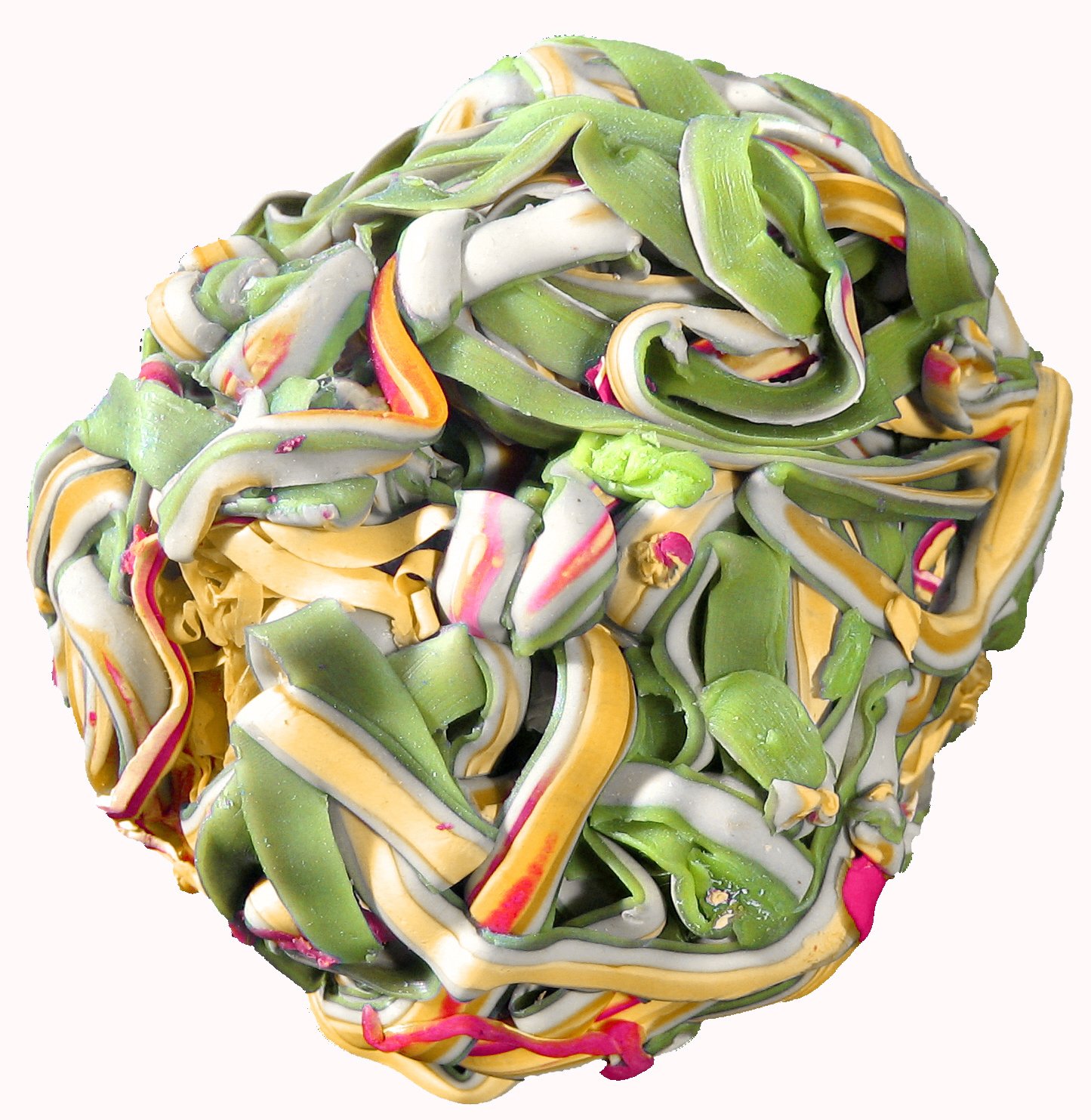


Conference Home Page
Conference Home Page
The 19th International Encaustic Conference
May 29 - May 31, 2026
Bringing a community of artists together with gallerists, curators, critics and collectors engaged with wax, printmaking, mixed media and professional practices. The 19th International Encaustic Conference is directed by Cherie Mittenthal and produced by Truro Center for the Arts at Castle Hill.
Attending this year's Conference? Want to stay in the loop?
Join the International Encaustic Conference Facebook Group to connect with fellow attendees.
The Conference will take place at Edgewood Farm in Truro!
Click the links below or keep scrolling down to learn more.
We will keep information updated on this page. Shows, vendors, and other events associated with the Conference will be added as the planning continues!

Schedule
Schedule
2026 Conference Schedule
*Schedule may be subject to change
FRIDAY, May 29
8:30
Registration Opens
Coffee, Pastries, and Info Under the Tent
9:30 - 10:30
DEMO: Wayne Montecalvo
From the Bottom Up: Working with Glass, Plexi and Other Materials as Surfaces for Encaustic
This live demonstration will cover methods to use encaustic medium as a binder with Japanese papers and combining hand drawing, photo based images, mark making, acrylic paint, India ink, pencil,charcoal, and more, on a surface.
TALK: Megan MacDonald
Contemporary Mark Making on Non-Traditional Surfaces in Encaustic
A simple line can say so much. A line can be bold, expressive, graphic, or delicate, the list is long. There is however nothing more beautiful or unique than the hand drawn line, as a hand drawn line expresses ones individual style. This demo explores ways to stay loose when creating lines, drawing and ways of marking in encaustic. Discusses the importance of the drawn line and ways that one can utilize it to give new depth and focus to their work.
TALK: Milisa Galazzi & Lisa Pressman
Contemporary Through Lines: Global Artists Working with Paper, Thread, and Wax
Have you ever wondered who else is working with paper, thread, and wax—and how these materials speak to one another in contemporary practice? This talk offers artists a contextual framework for understanding the lineage and relevance of these mediums today. Through a survey of a dozen international artists whose primary materials are paper, thread, and wax, we’ll explore how these elements intertwine to convey ideas of fragility, strength, connection, and transformation. Join us to discover the conceptual and material through lines that link these diverse practices across borders and generations
10:45 - 11:15
Welcome and Orientation for Newcomers
11:30 - 12:30
DEMO: Tracy Spadafora
Going Natural - Incorporating Organic Matter in Encaustic.
Learn the best practices for incorporating organic materials into an encaustic painting. Various organic matter will be covered, as well as how to adhere and preserve these materials.
DEMO: Debra Claffey
Drawn to Wax, Exploring Line in Encaustic Painting
In this demo we’ll explore the many ways to make a line, to find a line, or to reveal a line in your encaustic work. We’ll talk about the different qualities of lines and ways to make your line expressive and personal to you.
TALK: Joanne Mattera
Navigating the Art World
The art world as we know it is intergenerational, multiethnic, and geographically diverse, with local, regional, national, and international components. It can be difficult to navigate its various levels and categories. This PowerPoint talk, for experienced artists looking to move their career to the next level—as well as for those new to the art world who simply wish to understand how it works--will cover topics big and small: understanding the various networks (artist, dealer, curator, electronic) and the various art worlds (commercial, non-profit, academic, art fairs, artist-initiated projects) and how they intersect. Equally important: how you can intersect with them.
12:30 - 1:30
Lunch
1:30 - 2:30
DEMO: Isabelle Gaborit
The Lay of the Land: Storytelling Through Texture in Encaustic
In this one-hour demonstration, Isabelle Gaborit explores how encaustic texture can become a language of memory, landscape, and personal narrative. The Lay of the Land frames painting as topography, where valleys, ridges, and layered wax convey emotion, story, and environment. Participants will see how gesture, pressure, and directional forces shape texture, turning marks into meaningful symbols. Smooth, flowing areas can evoke calm or reflection, jagged edges suggest tension or conflict, and layered surfaces hold memory and narrative depth. Using scraping, pressing, incising, and layering techniques, attendees will learn to translate both inner landscapes and natural forms—rocks, water, hills—into expressive wax surfaces. The demonstration also highlights how heat and movement refine textures, enhancing emotional and symbolic impact. Attendees will leave with practical insight into using gesture and surface direction as storytelling tools, gaining inspiration for integrating texture, movement, and narrative into their own encaustic work.
TALK: Bettina Egli
Encaustic & Fresco
Why and how to combine encaustic and fresco.
TALK: Esperanza Cortés
Social Media for Artists
Instagram and LinkedIn are effective tools for artist. Optimize your profile with a clear bio, professional photo, post consistent high-quality content, and engage with your audience and other artists. Share your creative process and stories behind your art. Professional images and videos (especially Reels), and strategically use a limited number of relevant hashtags.
2:30 - 3:00
Break
3:00 - 4:30
GROUP EVENT: TBA
5:00
Last call at the Vendor Room
SATURDAY, May 30
9:00
Late Registration, Vendor Room Open, Postcard Show Open for Viewing
9:30 - 11:30
Keynote Lecture: Portia Munson
11:30 - 1:00
Break / Lunch
1:00 - 2:00
DEMO: Dietlind Vander Schaaf
Incorporating R&F Pigment Sticks® + Drawing Oils™
R&F employee Dietlind Vander Schaaf will address both product lines highlighting their differences and similarities, as well as best practices when incorporating them into encaustic. As part of this talk, Dietlind will cover health and safety, appropriate supports and tools, transparency and opacity, and mark making, as well as incorporating both product lines with encaustic. Additional techniques and compatible products will be highlighted, such as R&F Blending Medium and Blending Medium with Drier
TALK: Susan Lasch Krevitt
IMAGE SURVEY: Past Conference Presenters & Workshop Instructors
This image presentation features work from the past 19 years of Conference Presenters & Workshop Instructors. Images will include both past and current work. As The Conference approaches its 20 year anniversary in 2027, lets begin to look back at our history.
TALK: Carol Pelletier:
The Use of Cold Wax in Contemporary Art
Many contemporary artists utilize cold wax in their practice, we wouldn’t always know about it due to the fact that their work is conceptually driven and not influenced solely by the medium. This presentation by Carol Pelletier will be an overview of contemporary artists who are currently working with cold wax both in the traditional sense and in unconventional ways. She will be touching upon a wide ranging group of styles, the ideation behind the work and how the medium has been used not only for two dimensional imagery but also for sculpture and other surfaces.
2:00 - 2:30
Break
2:30 - 3:30
DEMO: Leslie Giuliani
Faux Gilding
Learn how to create a faux gilded frame using an Ampersand panel, balsa wood and cardboard.
TALK: Patti Russotti
Between Hand and Lens Lies the Art of Noticing - Artists Who Use Cameras & Photography
TALK: Richard Frumess & Darin Seim
Making Color
TALK: Jodi Reeb
Creative Mindset: Selling Your Work.
There is an audience for your artwork! I have been a professional artist for over 29 years making my living from creating original artwork and teaching. I want to share some tried and true strategies that have worked for me over the years to market and promote my work in the real world and online. This process begins with your mindset. Show up powerfully with confidence, clarity and sell your art! I hope to inspire you with ways to customize and find your market.
3:30 - 4:30
Booksigning
Postcard Show Sale Opens
SUNDAY, May 31
CHECK BACK SOON FOR SUNDAY’s SCHEDULE!

Keynote
Keynote
2026 Keynote: Portia Munson
Portia Munson, studio portrait, 2025, photo by Helen Ho
Portia Munson creates maximal installations, sculptures, paintings, and digital prints using a vast accumulation of ready-made products to decipher the latent cultural codes embedded in mass-produced items. The resulting works emphasize the role of consumerism on the formation of identity and the connection between the ongoing struggle for gender equality, reproductive rights, and the dire ecological crisis. Munson lives and works in Catskill, NY. She holds a BFA from Cooper Union, an MFA from Rutgers University, and studied at the Skowhegan School of Painting and Sculpture. Her work has been the subject of over twenty solo exhibitions at the Museum of Sex, New York, NY; P·P·O·W, New York, NY; White Columns, New York, NY; MASS MoCA, North Adams, MA; Pamela Salisbury Gallery, Hudson, NY; and Art Omi, Ghent, NY, among others. Her public works include Pink Projects with the Art Production Fund, Rockefeller Center, New York, NY; Art in the Terminal, the Albany International Airport, Albany, NY; MTA Arts for Transit, Bryant Park MTA Station, New York, NY; and a permanent Metropolitan Transit Authority installation in Brooklyn, NY. Munson’s work has been featured in The New York Times, The New Yorker, Artforum, Hyperallergic, Huffington Post, Dazed, VICE/Creators Project, & Bust Magazine. She received a Pollock-Krasner Foundation Grant (2019). Portia Munson is represented by PPOW Gallery.
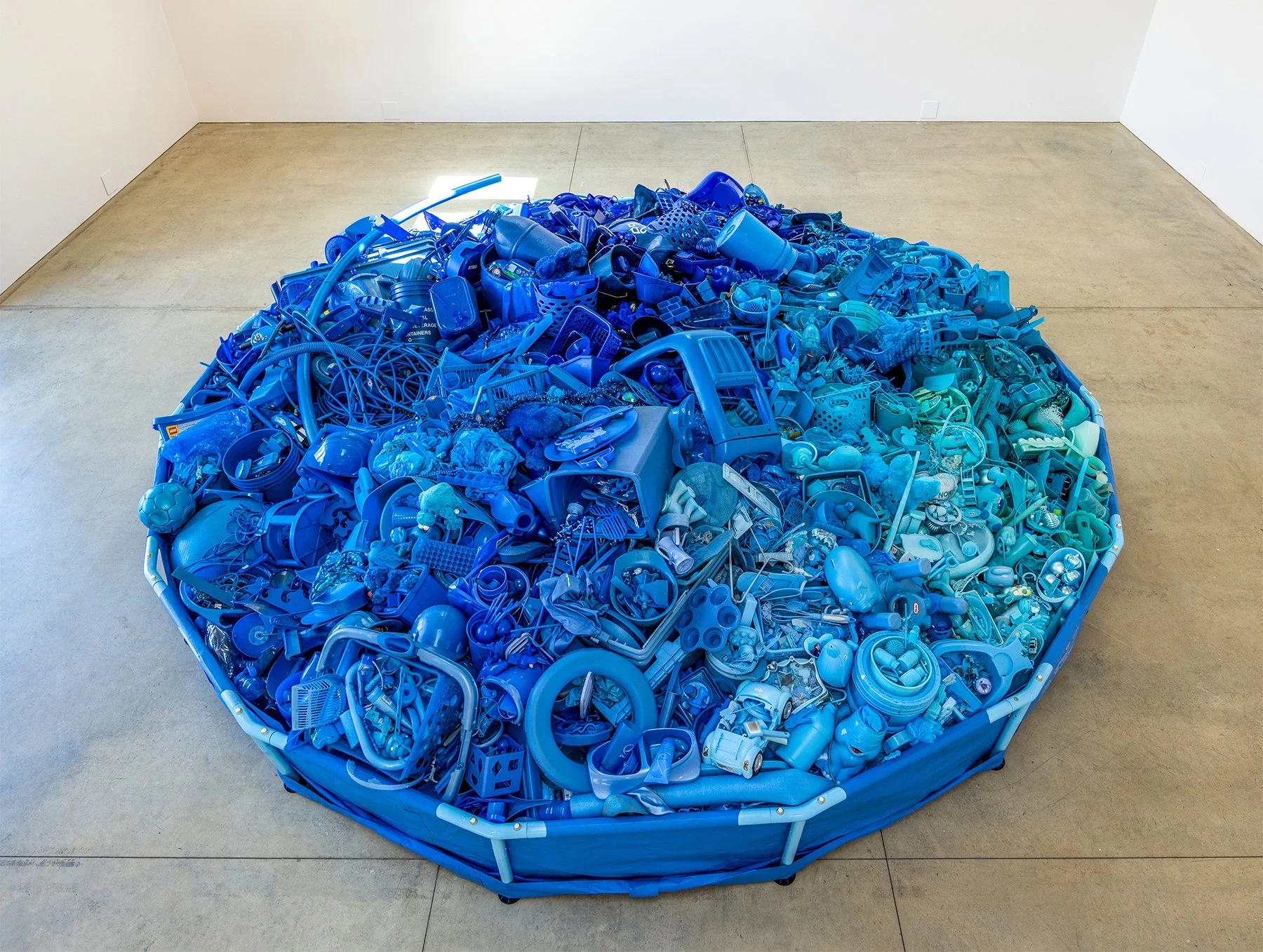




Pre and Post Conference Workshops
Pre and Post Conference Workshops
Pre- & Post- Conference Workshops
Expand on the topics and techniques that are presented at the Conference, learn something new, or dive deeper into your practice!
Please note that we have 2 campuses that host workshops, Edgewood Farm and Castle Hill. Materials may be included in the class tuition, you may be asked to bring other materials with you. Refer to the class materials lists for more information regarding supplies and location of each class.

Bios
Bios
Presenter and Instructor Bios
Edith Beatty is a Vermont artist working in encaustic, oil, fresco, and fiber, with earthy materials such as beeswax, unbleached pulp, sand, and natural pigments. Her work has shown in juried and curated shows in Seattle, New York City, Cambridge, Truro, Portland, Chicago, and all over Vermont. Beatty shares her passion for art by teaching, presenting, and networking with others. She is a member of New England Wax, the Brandon Artists Guild, and several other artist groups.
Debra Claffey’s paintings in oil, encaustic, and mixed media concentrate on abstracted plant and foliage forms as expressions of the human dilemma. Her experience in horticulture adds a scientific perspective to her aesthetic appreciation of the natural world. With the plant kingdom as muse, Claffey’s work employs direct observation of nature to comment on the critical relationship between humans and plants. Claffey’s paintings have been exhibited across New England and have won several awards, the most recent being a 2025 Recognition Award from Juror Toby Sisson at the Bristol Art Museum’s Rock, Paper, Scissors and the Juror’s Award from Joanne Mattera in Anything But Flat at the Truro Center for the Arts at Castle Hill, in Truro, MA.. Juror Katherine French recognized her work with an Honorable Mention in Catamount Art’s Arts Connect exhibition in St. Johnsbury, Vt in 2022. Claffey received two Artist Entrepreneurial Grants from the New Hampshire State Council on the Arts and the National Endowment for the Arts in 2011 and 2020. She won the Bank of New Hampshire Award in the 50th Annual Exhibition at the Currier Gallery of Art in Manchester, NH. She holds a BFA in painting from the School of the Museum of Fine Arts at Tufts University and an Associate's Degree in Horticultural Technology from the University of New Hampshire. She has been Past-President of both the New Hampshire Women’s Caucus for Art and New England Wax. She exhibits with a four-artist collective named Elemental, which focuses on environmental issues. Claffey currently teaches online and in her Maine studio.
Esperanza Cortés is a New York City based multidisciplinary artist and educator, whose work spans sculpture, painting, works on paper, installation, and video. Cortés’ exhibitions include Smack Mellon, Bronx Museum, Queens Museum, El Museo del Barrio, MoMA PS1, Albright-Knox Gallery, Ogden Contemporary Arts, Corcoran Gallery of Art, Neuberger Museum of Art and Cleveland Art Museum. International exhibitions include Europe, Latin America and Asia. Cortés awards include: Guggenheim Fellowship, New York State Council on the Arts Project Grant, Joan Mitchell Foundation Fellowship, Vilcek Foundation Artist Research Fellowship, Lower Manhattan Cultural Council Grant, Socrates Sculpture Park Fellowship, Puffin foundation, New York State Biennial, Bronx Museum AIM Fellowship, New York Foundation for the Arts & Sustained Achievement in the Visual Arts Award. Cortés' residencies include: MacDowell, Yaddo, Ucross, Pine Meadows Ranch Center, Peter’s Valley School of Craft, Children’s Museum of Manhattan, McColl Center, Museum of Arts and Design, BRIC Workspace, Caldera Residency, Joan Mitchell Center, Sculpture Space, Fountainhead, & MoMA PS1 International Residency. Cortés' work is in private and public collections including the Museum Of Fine Arts, Boston and the American Embassy in Monterey, Mexico.
Bettina Egli Sennhauser’s passion centers on developing her abstract vocabulary through the exploration of natural materials and an intuitive, process-oriented approach. She is deeply engaged in the contemporary interpretation of ancient techniques of encaustic and fresco. Since 2019, she has served as a freelance lecturer at different Art Academies in Switzerland, Germany, Austria, Ireland and in the USA. She is a speaker at the International Encaustic Conference in Provincetown and has published her first book on Cold Wax Techniques in 2023. Her work has been showcased in exhibitions across Switzerland, Italy, and was selected for juried exhibitions in Provincetown, Palo Alto and New York in the USA. In 2024 she won the Director^s award at the International Encaustic Conference. She is represented by the Soderbergh Gallery in Wellfleet, MA. Bettina works and lives in Switzerland, near Basel, where she leads her art teaching studio `kunstfreiraum` (www.kunstfreiraum.ch).
Richard Frumess has been manufacturing artist paint commercially since 1982 when he began making encaustic paint for Torch Artists Supplies in New York City. In 1988 he founded R&F Handmade Paints to ensure the continuance of encaustic paint after Torch closed. Two years later developed Pigment Sticks. Although retired from R&F, he remains a consultant on technical issues. His color workshops grew out of an investigation into the underlying principles of R&F’s color line that had been developed intuitively over the years by him and R&F’s staff. The workshops are intended to ground color theory in the material characteristics of individual colors.
Isabelle Gaborit is a contemporary visual artist based in the west of Ireland, where she works from her studio nestled between the sea and a lake. Her chosen medium is encaustic— a process as ancient as it is immediate—using molten, pigmented beeswax manipulated with a blowtorch. This tactile and sensuous method lies at the heart of her process-driven practice, allowing her to respond directly to the raw natural forces that shape the wild Atlantic landscape around her. Originally from La Rochelle, France, Isabelle studied sculpture, drawing, and painting at l’École des Beaux-Arts in Poitiers before completing a BA (Hons) in Fine Arts in Ireland in 2006. Her work has been exhibited nationally and internationally, including France, Northern Ireland, the USA, Germany, and China. With over two decades of teaching experience, Isabelle has led workshops and retreats across Ireland and internationally, including the International Encaustic Conference in Massachusetts, Mulranny Arts, Leitrim School of Art in Ireland, and kunstfreiraum in Switzerland. She is a core instructor with R&F Handmade Paints, contributes to the online program Painting with Fire, and serves on the board of the International Encaustic Artists (IEA). In 2024, she joined Mastrius Masters as a mentor, supporting emerging artists in developing their creative voice and professional presence.
Milisa Galazzi is a contemporary artist whose work explores the unseen forces that connect people, time, and place. Working with paper, thread, and wax, she creates intricate, light-responsive constructions that merge materiality with metaphor. Galazzi’s practice is grounded in ideas drawn from string theory, quantum field theory, and the natural processes of growth and transformation. Her art often evokes the language of weaving, shadow, and transparency to investigate themes of human connection, memory, and labor. Her work has been exhibited in museums, galleries, and institutions across the United States and abroad, and is held in numerous private and public collections. Galazzi’s art invites viewers to pause, to look closely, and to reflect on the delicate balance between fragility and resilience that defines both material and human experience.
Leslie Giuliani is an American contemporary artist. Her work combines textiles, encaustic, oil painting and printmaking. Born in Philadelphia, PA, Giuliani received her BFA from The University of Delaware, with further studies at the Pennsylvania Academy of Fine Art. Her work is represented in collections of the Housatonic Museum of Art, the State of CT and many private collections. She was the recipient of an Artist Fellowship Grant from the state of CT for Craft and a residency Fellowship at the Vermont Studio Center. Giuliani lives and works in Weston, CT.
Susan Lasch Krevitt received her BFA from The School of the Art Institute of Chicago where she majored in Sculpture & Material Studies. Susan uses new & up-cycled textiles, rubber, cardboard, metal, leather & whatever it takes to build abstract, free standing & wall hung sculptural paintings. She is passionate about materials, always looking for possibilities to incorporate something new. Her organic, process driven work explores themes of structure, connection, transformation & memory. She finds inspiration in observations of the natural world, including growth/decay, earthly/underwater life forms & plants, especially cactus/succulents. Her work has been exhibited in galleries & museums internationally & throughout the United States since 1985. Susan has shown work at the Cape Cod Museum of Art & The Provincetown Art Association & Museum on Cape Cod. In California, she’s shown at The Chaffey Community Museum & The Riverside Art Museum. Work was included in a group show at The Painting Center in NYC. Susan was a featured artist in an article published in The Surface Design Journal and she has a piece in the catalog for Feel Free, an international show that traveled around the world for 3 years. Susan teaches workshops & works one on one with artists in her Thousand Oaks, California studio.
Megan MacDonald (she/her) is a multi disciplinarian visual artist with a focus on encaustic and Core Artist Instructor for R&F Handmade Paints. Megan is drawn to natural and organic forms, the energy of hand-drawn lines, and the alchemy that occurs with the convergence of natural elements. She gravitated to encaustics due to its beautiful depth and luminosity, as well as, the myriad of possibilities the medium offers. Although she continues to explore a variety of mediums in her art practice, her focus is primarily centred on encaustic. Through formal education, Megan studied fine art at Emily Carr University and resumed her studies through Emily Carr’s Continuing Education programs and was apart of the in-depth colour study program under Tom Hudson. Additionally, she has taken part in the Golden Acrylics training program and has been a guest instructor for a wide variety of groups and institutions. Megan has been instructing and mentoring for over 20 years, owned and operated an artisan gallery and studio space for over 10 years, served on the board of the Delta Arts Council, co founded a non profit group artists group and has curated and juried numerous art shows. She has been an instructor and presenter for both the International Encaustic Artists conference and workshop leader at the International Encaustic Conference in Provincetown, Massachusetts. In September 2025, She will be a presenter and workshop leader at the inaugural Canadian Encaustic Conference in Owen Sound, Ontario Canada. An award-winning artist whose work has been in juried exhibitions both nationally and internationally. Her work can be found in numerous private collections around the globe. Megan continues to create and instruct out of her studio, The Crow’s Nest Art Studio is now located on Vancouver Island, in Maple Bay, just outside of Duncan, British Columbia, Canada.
In her almost five-decade career, Joanne Mattera has had 35 solo shows and participated in about 10 group shows annually, both national and international. Her most recent solo, From Dawn to Dusk, took place at Odetta Gallery in Manhattan in late 2019. Joanne’s curatorial projects include Textility in 2012 at the Visual Arts Center of New Jersey, Summit; A Few Conversations About Color at DM Contemporary in Manhattan in 2015; and Depth Perception in 2017 at the Cape Cod Museum of Art, Dennis, Massachusetts, which she curated with Cherie Mittenthal. Joanne’s work is in the New Britain Museum of American Art, Connecticut; Montclair Art Museum, New Jersey; Connecticut College Print Department; University Collections at the University of Albany; the U.S. State Department, Washington, D.C.; and numerous institutional and private collections. Joanne is founder and director emerita of the International Encaustic Conference and author of The Art of Encaustic Painting: Contemporary Expression in the Ancient Medium of Pigmented Wax. Her memoir, Vita: Growing Up Italian, Coming Out, and Making a Life in Art, was published in 2019 by Well-Fed Artist Press in Manhattan.
Kelly McGrath has been a practicing artist since 2007 and Art educator since 2009. She utilizes wax, paper, plaster, wood, clay and found materials in her process driven work. She explores themes that are influenced by biologic process like growth and decay, mutation and evolution. She has been invited to present and teach at R&F Handmade Paints, Women's Studio Workshop, Castle Hill Center for the Arts, Peter’s Valley and Snow Farm. She earned her BFA in Sculpture from SUNY New Paltz in 2007 and her Master’s in Art Education from Hunter College in 2019. She is currently employed at SUNY New Paltz as the Instructional Support Technician for the Sculpture Department.
Kelly Milukas works and teaches in a variety of media, among them pastel, water-based & ink-based paints, and mixed-media-sculpture; with a particular love of creative encaustic and pastel fused together. In addition to private mentoring, retreats, and instruction in her seacoast New England studio, Kelly serves as Core Instructor for R&F Encaustics, Instructor for the International Encaustic Conference at Truro Center for the Arts in Massachusetts, and a Master Pastelist Instructor for the International Association of Pastel Societies in New Mexico, where she holds an International Pastel Masters Circle title. Kelly is an instructor, speaker, and art & science residency collaborator, an award-winning artist whose practice began as a sculptor and has expanded to multi-media painting including pastel and encaustic painting. Milukas’ solo exhibitions have been hosted at the Ronald Reagan International Forum, Washington, DC, the Museum at Palm Beach Photographic Centre, FL, and the Regenerative Medicine Forum in Berkeley, CA. Her artwork is in national museums, international private and corporate collections, and been visible at international art fairs such as Red Dot Miami, and Boston International Art Fairs. Her story and artwork have been featured in IAPS Globe 2021, ArtScope, Newport Life Magazine, Palm Beach Times, and The Pastel Journal, and in several books: “100 New England Artists”; ”Best of American Pastel Vol. 2”; “Artists Homes and Studios”, “A Woman’s Shed”; “The History of Little Compton, First Light: Sakonnet, 1660-1820”; and The Cortland Review. She’s served as a curator and juror, and her ability to communicate ideas has established her as a respected and sought-after instructor and speaker in, arts and science forums, universities, and corporate leadership programs. She is a juried artist member of the Salmagundi Club, NYC, the Connecticut Pastel Society & the RI Watercolor Society, she’s the founding President Emerita of the South Coast Artists, RI & MA, and a past President of the Providence Art Club, the 3rd oldest art club in the United States founded in 1880.
Cherie Mittenthal, Director and Producer of the International Encaustic Conference. She’s been working predominately in wax or encaustic paint while integrating tar, marble dust, pigment sticks, dry materials, graphite, collage and miscellaneous mediums. She has her MFA from the State University of New York at Purchase and her BFA from the Hartford Art School at the University of Hartford. She’s the Executive Artistic Director of Truro Center for the Arts at Castle Hill since 2002. She serves on the board of Campus Provincetown, Provincetown Cultural Council, OCARC - the Outer Cape Artist Residency Coalition and is partners with Highlands Center & the National Seashore for the only Wood-Fired Kiln on Cape Cod. She won the 2019 Artist Fellowship award from the Arts Foundation of Cape Cod.
Wayne Montecalvo is a multi-disciplinary artist who holds a Bachelor of Fine Arts degree from the School of Visual Arts in New York City. He currently lives and maintains his studio in Rosendale, New York. Montecalvo’s work has been featured in solo and two-person exhibitions at The Hall of Awa Japanese Handmade Paper, Yamakawa, Tokushima, Japan; Muroff Kotler Visual Arts Gallery, SUNY Ulster, Stone Ridge, NY; and CHRCH Project Space, Cottekill, NY. From 1998-2013 Wayne worked in the Art Department at the State University of New York, New Paltz campus, and taught as an adjunct employee from 2010-2013. From 2014- and currently, works as a freelance artist from his own studio. From 2017-2022 Wayne also worked as a prop builder for PRG Technologies, New Windsor, NY. Additional teaching and related experience include R&F Handmade Paints, Kingston, NY. Pilchuck Glass School, Stanwood, WA. The Printmaking Center at the College of Santa Fe, NM. Bard College, Annandale on the Hudson, NY. Studio Joy, Kansas City, MO. Mount Everett Regional school, Scheffield, MA. The Draw, Kingston, NY, The Woodstock School of Art, and Studio E, San Miguel de Allende, Mexico.
Carol Pelletier (b.1969, Fort Kent, ME) is an artist currently living and working on the Northshore of Boston. She is represented by the Cynthia Winings Gallery in Blue Hill, Maine, Morpeth Contemporary in Hopewell, NJ and the Gallery on Federal in Newburyport, Massachusetts. Her work has been exhibited in solo and group shows nationally and internationally, including Speedwell Projects in Portland, Maine, the Cape Cod Museum of Art, Leslie Lohman Museum of Art in NYC, Boecker Contemporary in Heidelberg Germany, Centre d'Art Contemporain Metz France, Saint-Mary's University in Nova Scotia, Julie Heller East, Provincetown, and Soren Christensen in New Orleans. Her work has been in multiple catalog exhibitions and publications including New American Paintings, Southwest Art Magazine, Creative Quarterly, Artscope and Art New England. She is a professor of art at Endicott College in Beverly, Massachusetts. She is currently a visiting artist at the Truro Center for the Arts at Castle Hill in Truro, MA and has been a visiting artist at the Peabody Essex Museum in Salem and Snow Farm in Williamsburg, MA. Her work has earned support from the National Endowment for the Arts, the Mellon Foundation, the Vermont Studio Center and she is a Salzburg Global Fellow. Carol Pelletier is the Chair of Fine Arts and Professor at Endicott College, in Beverly Massachusetts.
Lisa Pressman is a painter and educator whose work explores memory, transformation, and the language of materials. With an MFA in Painting from Bard College, she has taught nationally and internationally for over two decades. Her workshops encourage experimentation, curiosity, and the development of a personal visual voice through layered, process-driven exploration. Lisa’s teaching is sponsored by R&F Handmade Paints, featuring the use of their Pigment Sticks and Drawing Oils. Represented by Susan Eley Fine Art (New York) and Addington Gallery (Chicago), she is known for creating an inspiring studio environment where discovery and meaning emerge through making.
Jodi Reeb received a BFA degree in Fine Arts from the Minneapolis College of Art & Design, MCAD, where she instructed printmaking for over 9 years. Jodi has been a full-time working artist creating paintings and sculpture and a teacher in Minneapolis for over 28 years. She has taught printmaking, acrylic and encaustic painting as well as book arts classes/workshops at colleges and art centers regionally and internationally. She has taught encaustic workshops at the Essence of Mulranny in Ireland, Zijidelings in Netherlands, Kunstfreiraum in Basel, Switzerland, and San Miguel De Allende. Nationally, she has taught workshops at Arrowmont School of Craft, Penland School of Art, Tubac Center for the Arts, Wild Rice Retreat and Haystack School of Art. She has been an online video instructor with Painting with Fire for 4 years and has taught workshops at the International Encaustic Conference in Provincetown, Massachusets for the past 7 years. She teaches monthly workshops in her NE Minneapolis studio and offers art study coaching to artists for professional development. She is a CORE teaching Artist for R&F Handmade Encaustic Paints, an Ambassador artist for Ampersand Art, Artist Educator for Silverbrush Ltd., and a GOLDEN Acrylic Paint Artist educator.
For more information, available artwork and workshops please contact Jodi at www.jodireeb.com
Artist, Explorer, Maker and Educator, Patricia Russotti is passionate about examinations of nature, the alchemical magic that occurs within natural phenomena and the creative process. Russotti’s current work is focused on entropy, negentropy, nature, and the small things she stumbles upon within the existing world. Russotti has been training and presenting on Adobe Photoshop and Lightroom since the first versions of the applications and employs these tools in the creation of her work. Her work has been consistently showcased through solo, group, and juried exhibitions. Her practice reflects a breadth and depth of experience and skill in image-making (including analog, digital, alternative, and historic processes), workflow, as well as digital output to a variety of substrates, such as fabric and washi. Currently, she is creating and offering workshops online and in person to provide emerging and established artists with acquiring digital tools to expand their art practice and to clarify their intent. She is the co-author of Digital Photography Best Practices and Workflow Handbook, A Guide to Staying Ahead of the Workflow Curve © 2010, published by Elsevier Inc, Focal Press. Her evolving methodology is continually featured at national and international conferences. She has been a regular presenter at national and international imaging and education conferences since the 1980s. Patti holds M.S. and Ed.S. Degrees from Indiana University, and spent four decades as a Professor at Rochester Institute of Technology – most recently in the School of Photographic Arts and Sciences.
Tracy Spadafora is a professional artist and art teacher who received a BFA from Boston Univ. (89’) and MFA from SUNY New Paltz (95’). She has been a recipient of a Frances Kinnicutt Award, Blanche Coleman Award, St. Botolph Foundation Grant, and a couple of Somerville Arts Council artist grants. Her work has been exhibited across the country and is in many private and public collections, including Harvard University, the Danforth Museum, and Bank of America. Her work has also been featured in many publications, including Artist’s Magazine, Art Scope Magazine, and the Boston Globe.
Dietlind Vander Schaaf holds an MFA from the University of San Francisco and an MA from the University of Southern Maine. Her work has been described as “the transformation of disparate objects into elegantly simple compositions of pattern and grace” (Artscope). Vander Schaaf has exhibited at the Cape Cod Museum of Art, The Fuller Craft Museum, and On Center Gallery, among others, and been featured in Maine Home + Design, Decor Maine, UPPERCASE, and Downeast magazines. Vander Schaaf is a Core Instructor for R&F Handmade Paints, an Ampersand Ambassador, and the former president of New England Wax. She has taught workshops throughout the country, including Haystack, Arrowmont, Castle Hill, Snow Farm, Penland, Maine College of Art, R&F, and internationally at Zijdelings in The Netherlands, Essence of Mulranny in Ireland, and Kunstfreiraum in Switzerland. The recipient of grants from the Maine Arts Commission and International Encaustic Artists, as well as a Tending Space Artist Fellowship from the Hemera Foundation, she is represented by Portland Art Gallery and Artemis Gallery. Vander Schaaf is a 500 hr Kripalu yoga instructor with specialty training in meditation, advanced asana, Ayurveda, vinyasa, and pranayama, as well as a Level 2 Archery Instructor through USA Archery.

Harbor Hotel
Harbor Hotel
Come Stay in Provincetown!
Book a room at the Harbor Hotel in the Conference Block.
The Harbor Hotel has offered to match the prices of 2025 for this year’s Pre/Conference/Post weeks.
Visit: https://www.harborhotelptown.com/
On the website click "Book Now". This will bring you to a pop up and you will see an option for PROMO code directly under the date range. Enter the code ENCCONF26 and this will generate rates for all of the different room types.
harborhotelptown.com
508-487-1711

Traveling to Provincetown & Truro
Traveling to Provincetown & Truro
Traveling to Provincetown and Truro:
Provincetown is located at curled fingers of the flexed arm of Massachusetts, and Truro is about 15 minutes down Route 6. We’re at the very tip of Cape Cod.
There are many ways to get to the Outer Cape, if you're new to the Conference, these are your travel options:
20 minutes via Cape Air from Logan International Airport
90 minutes via ferry from Boston Harbor
2.5 hours driving from Logan Airport in Boston to Truro
2.5 hours driving from T.F. Green Airport in Warwick, R.I. (near Providence), with less traffic than from Boston
Fly from Boston to Provincetown: Cape Air
Plan on around $350 round trip. Check website for latest schedule and rates
Some conferees have found it cheaper to book their flight directly to Provincetown via Jet Blue, which partners with Cape Air. You'll still change planes at Logan, but through-booking should offer a better price.
If you wish to rent a car, Enterprise at the Provincetown Airport has cars available--but you must reserve as a limited number are typically available.
Ferry from Boston to Provincetown: Bay State Cruise Company & Boston Harbor Cruises
Check websites for latest schedule and fares
One caveat: A crossing can be a bit unpleasant if the bay is rough. Come prepared with anti-nausea medication if you are prone to seasickness.
If the company determines that the crossing will be too rough, you will board a bus and be taken directly to McMillan Wharf in Provincetown, where the ferry normally disembarks
Ferry: McMillan Wharf is where the ferry arrives. There are always taxis and pedicabs at the wharf to meet arriving passengers. It's about a mile from the Inn
Cape Air: The Harbor Hotel is about a 15-minute taxi ride from the airport.
Thinking of renting a car in P-Town? Enterprise is the franchise, and you have to reserve. You'd pick up the car at the airport. But unless you are planning to drive around the Cape, it's actually cheaper and far more convenient to take a taxi when you need one and walk the rest of the time. Besides, with so much taking place at the Inn, your car will sit in the parking lot. A car will come in handy if you are taking workshops at Castle Hill, but we can work with you for Pre- and Post-Conference to hook up folks with cars to those who need a ride.
*If you are looking to share a ride, try the Facebook page to link up with other travelers!

Edgewood Farm Info
Edgewood Farm Info
Edgewood Farm, 3 Edgewood Way, Truro
Edgewood Farm is located on 7.5+ pristine and protected acres in Truro at the tip of Cape Cod, Massachusetts and bounded by the Cape Cod National Seashore on the east and the Town of Truro Conservation Land on the south. It is a beautiful campus located right off of Route 6 where you can find a slice of peace and quiet, connect with the natural world, and unleash your creativity here on the Outer Cape!
The environmentally conscious Printmaking Studio is home to 3 presses that can produce intaglio, relief, monotype, silkscreen, bookmaking and lithography.
3D Studio and Welding Pad, is well equipped for woodworking and includes a CNC machine. The outdoor Welding Pad is a great space for not only welding, but other metalwork, papermaking, and sculpture.
The grounds of Edgewood is the home to a sculpture garden, that was installed as a celebration of Castle Hill’s 50th Anniversary, as well as an outdoor stage, “Sam’s Stage” and community garden that is open for the public to join. The large meadow is a great place to take in the view, or find some shade under the magnificent walnut tree, or American Elm tree that grow in the garden grove.
The Wood Kiln, a part of the Ceramics Department, is located at Edgewood Farm. This train kiln is fired multiple times throughout the year.
The Barn at Edgewood is a favorite place for visiting faculty as well as the Artists in Residence. A cozy living area and large dining room makes this space ideal for writing workshops.
The Main House has 5 bedrooms that are available to students throughout the summer, as well as the Artists in Residence. The Cottage is a stand alone building that is also available for student and visiting artist housing.
All three buildings in the upper courtyard, the Barn, Main House, and Cottage, have been fully renovated to historical standards to maintain the integrity of Edgewood Farm’s rich history.

Postcard Sale
Postcard Sale
Yes, we will still have the postcard show and sale!
The Postcard Show is one of those glorious win/wins. Conferees--as well as friends of the Conference--donate postcards for show and sale. It's an exhibition for the artists donating, and every penny of the sale goes toward scholarships for the following year.
Each year will see a different group of artists receive the Conference Scholarship Grant, which offers a paid-for entry to the Conference. Additionally, the Scholarship Grant is a legitimate entry for your resume.
How to pack: Please try to cut down on excessive packaging. The flat lightweight-cardboard or padded mailers available at the Post Office or FedEx should be sufficient to protect your work. You might wish to interleave your postcards with glassine, and then sandwich the stack between two lightweight layers of cardboard--the type that comes in a digital-print paper box--before inserting the whole thing into the mailer. For good measure, I'd write "Do not bend."
Stephanie Roberts-Camello will be collecting the postcards and getting them ready to hang.
Please mail directly to Stephanie: 24 Standford Hill Road, Pembroke, MA, 02359
You can reach out to Marisa with any questions: marisa@castlehill.org
Postcard Guidelines
Size: postcard dimensions of 4x6 inches. Horizontal or vertical orientation is fine. Please keep your cards as close to the 4x6 size as possible so they can fit into the plastic sleeves which will be provided
Paper: People have used 300-lb watercolor paper to paint on, lightweight Japanese paper to print with, and everything in between. Other: Some artists have used 4” x 6" prepared panels, and others have used small stretched canvases or thin boards
Dimension: Most of the postcards are two-dimensional, but who are we to cramp your style? Relief and three-dimensional works are entirely welcome
Installing: We provide the archival poly bags. A small group of enthusiastic volunteers will pin each poly bag to the walls around the room.
Materials: Most artists have incorporated wax entirely or in part, but we're open to your particular material expression
Limit: There is no limit to the number of cards you donate or buy
Getting into the room to buy: We'll have specifics listed on the schedule. The room will be open just for viewing prior to sale.

FAQ
FAQ
FREQUENTLY ASKED QUESTIONS
Will there be any virtual component to the Conference this year?
Sorry, no, we will not be recording the sessions this year. All talks and demos are going to take place in person over the weekend!
Is there an orientation for those of us who are new to the Conference?
Yes, on Friday morning after the first session! Cherie will chat about all things conference, and answer all of your questions!
All are welcome to attend as the venue is new. We’re excited to share our campus with you!
What if I want to register for just one day of the conference?
We very much prefer for you to sign up for the full event.
Are post-conference workshops included in the conference price?
No, there is a separate fee. A lot of really great options this year! Workshops take place in Truro.
Do I need to bring materials for the conference demos or workshops?
Conference demos are strictly demonstration, so you do not need to bring materials. The Pre- and Post-Conference workshops are different. Teachers will provide a list of supplies that you may bring with you, and also what is provided. Castle Hill or the specific teachers will contact you if you're signed up. Also, it's important to note that our wonderful vendors donate a large amount of paint, medium and materials for you to try.
Could I register only for the Pre or Post-Conference sessions?
Sure. But you'll miss a great conference!
What if I decide at a later date that I wish to register for a Post-Conference workshop? Possible?
Sure. If there is space, you can register even during the conference if you wish. Please know, however, that the workshops can fill up quickly.
What are the hours of the post-conference workshops, and where do they take place?
The workshops run from 10:00am to 4:00pm with an hour for lunch as determined by the instructor. Informal events are planned for some of the evenings. We have two campuses in Truro - the specific location will be listed on your materials list and also emailed out as a reminder a few days prior to class.
I see you have multiple-day workshops. Is there any chance I could take just one day of, say, the three-day workshop so that I may take different workshops on other days?
Nice try, but the point of multiple-day workshops is to have the opportunity to explore one area in depth with one teacher and the same group of equally committed participants.
Where can I find a map of Provincetown?
Click here for a fully printable map of Provincetown.
Where can I find information about the local galleries?
Encaustic-specific info will be posted and shared when it has been finalized. Gallery Guides should are also available at Castle Hill, and the Harbor Hotel.
What's the weather like in Truro / Provincetown?
Normally, the temperature range in early June is is in the high 60s to low 70s during the day, and in the low 60s to high 50s at night. But that's an average. It can get hotter or colder. And the weather can turn on a dime. As the town meteorologist, Cherie guarantees it will be perfect!
So how should I dress?
Bring a light jacket or a sweater, a turtleneck, a t-shirt and a tank top; pants and shorts; sunglasses and an umbrella. In other words, dress for New England weather, which encompasses a meteorological range. You can safely leave the boots at home, however: The only thing you don't have to plan for this time of year is snow.
Is there a dress code?
Nope. Wear what you like, whether it's a sundress, jeans and a t-shirt, a suit, or cutoffs. Your choice.
Does the Conference provide food?
If you are staying at the Hotel, breakfast is provided. There will be light snacks and lunch provided at the Conference, as well as coffee and pastries in the mornings.
Can I purchase paint or paper or panels from the vendors?
Yes, the vendors will sell lots of stuff from the amazing Vendor room!
What is your Refund Policy?
We offer refunds before 30 days of the workshop or conference, after 30 days no refund.

History of the Conference
History of the Conference
Take a peek back in time, learn how the Conference started and evolved.
2007 - 2015: The History of the Encaustic Conference by Joanne Mattera
2016: Conference #10 at the Provincetown Inn
Keynote Speaker: Mary Birmingham
Juried Show: The Mark of the Brush, juror: Christine McCarthy
With the emphasis in encaustic on techniques such as scraping and pouring, melting and smoothing, the tra- ditional act of painting with a brush often gets overlooked. For this exhibition we challenge you to create works in which the composition has been created with a brush, in which there is strong evidence of paint application by a brush and by what the brush can do. While the subject matter need not be traditional, the means by which it is realized should demonstrate traditional paint handling. Printmakers, your brush marks would be in the matrix or on the plate, so while the surface of your prints won’t necessarily have texture, your image will bear the result of the brush. Sculptors, even dimensional work can evidence a surface marked by the brush.
2017: Conference #11 at the Provincetown Inn
Keynote Speaker: Sharon Louden
Juried Show: Sense of Place, juror: Patricia Miranda
A sense of place is something that we ourselves create in the course of time. It is the result of habit or custom.... A sense of place is reinforced by what might be called a sense of recurring events. A particular experience of a person in a particular setting (feeling stimulated, excited, joyous, expansive..
2018: Conference #12 at the Provincetown Inn
Keynote Speaker: Sharon Butler
Juried Show: Trans, juror: Tim Doud
Trans: a prefix occurring in loanwords from Latin transcend; transfix; on this model, used with the meanings “across”, “beyond,” “through,” “changing thoroughly,” “transverse,” in combination with elements of any origin: or a prefix meaning “on the other side of,” referring to the misalignment of one’s gender identity with one’s biological sex assigned at birth: Other words include: transaction, transfer, transferred, transformer, transparent, transitive, translated, transpose, transverse, transsexual, translation... so many options!
2019: Conference #13 at the Provincetown Inn
Keynote Speaker: Judy Pfaff
Juried Show: Anything But Flat, juror: Joanne Mattera
The challenge for this year’s juried show is to create a work that has a tangible, physical presence. Of course you can submit paintings, but we’d like to see depth or dimension in your paintings, whether the surface is built up, carved into, embellished, or assembled in some way. Sculpture by its very nature is dimensional, so show us how you handle space. Mixed media works are welcome, as are book objects.
2020: Conference CANCELLED due to Covid-19 Pandemic
2021: Conference #14 goes Virtual! This year, we presented a new format due to Covid-19.
Keynote Speaker: Joan Snyder
Juried Show: Pushing Boundaries: Bent, Cut, Cracked, Stapled, Smashed and Hammered, juror: Kaveh Mojtabai
The creative process is not judged and seen all the way through, a transformation happens. The work can hang from the ceiling, on the wall or sit on the floor or on a pedestal. This show is to think outside the box, think about ways one gets to the final process. Work must have encaustic in it, but it isn't limited to encaustic alone
2022: Conference #15 at the Provincetown Inn
Keynote Speaker: Michael David
Juried Show: Lucky Charms, Mojos, Signs, Cyphers and Zodiacs, juror: Deborah Dancy
2023: Conference #16 at the Provincetown Inn
Keynote Speaker: Hrag Vartanian
Juried Show: Sweet 16, juror: Adam Peck
2024: Conference #17 at the Provincetown Inn
Keynote Speaker: Petah Coyne
Juried Show: Inspiration, with juror Barbara O’Brien
“Inspiration” is the theme of this year’s conference exhibition, to be held at Truro Center for the Arts Gallery. The juror, Barbara O’Brien, is well-known to the community of artists who work in encaustic. This year’s keynote speaker, Petah Coyne, has taken inspiration from the myriad possibilities of working with wax to create sculptures of startling originality. Who or what inspires you? Being a studio artist is often a solitary experience built upon years of education, ambition, and discipline. Returning to this place of creation (ranging from a kitchen table to a large warehouse) and then putting one’s creations out into the world takes a leap of faith. Motivation can come from looking at the work of a living artist, or exploring the lineage of an art historical movement. Insight can emerge from a connection to powerful social and political issues. The Muse can be found walking along the shoreline, across a wide field or through a crowded cityscape. I want to know what inspires you to find your voice, create art, and continue along a challenging path.
2025: Conference #18 at Edgewood Farm
This is the VERY FIRST YEAR the International Encaustic Conference was hosted at Edgewood Farm, a campus of Truro Center for the Arts.
Keynote Speaker: Esperanza Cortés
Juried Show: Resist, Create, Love, juried by Patricia Miranda

Meet the Vendors
Meet the Vendors
The Vendor Room at Edgewood Farm
Don’t miss a chance to stop by the Vendor Room! Located on the first floor of the printshop building. Our wonderful vendors have art supplies, tools and equipment for you at bargain prices!
Founded in 1988 by artist and paint-maker Richard Frumess, R&F Handmade Paints manufactures two unique and heavily pigmented paint lines: our classic wax-based encaustic paint and linseed-oil based Pigment Sticks®. Located in Kingston, New York, R&F is committed to producing the highest quality paints with materials meticulously sourced from around the world.
Darin Seim and Sean Sullivan are the current owners of R&F. Both started in paintmaking many years ago (Darin in the 90s and Sean in 2007).
Christina and Kevin Brady
Encaustic tools and equipment, custom made in-house (USA) by an encaustic artist and her engineer husband.
Enkaustikos encaustic paints are made from the finest ingredients: we select the most beautiful pigments, the finest Damar Gum, and United States Pharmaceutical Grade (USP) Refined Natural White Beeswax. Our paints contain no bleach or synthetic adulterants whatsoever. Using these main ingredients, we manufacture a full color range of professional encaustic paints. 100 colors to date are being milled. Click on paint links below to view color swatches and read detailed descriptions of each of our colors. All colors are available in Hot Cakes, Hot Sticks, Wax Snaps and refills, unless otherwise noted.




